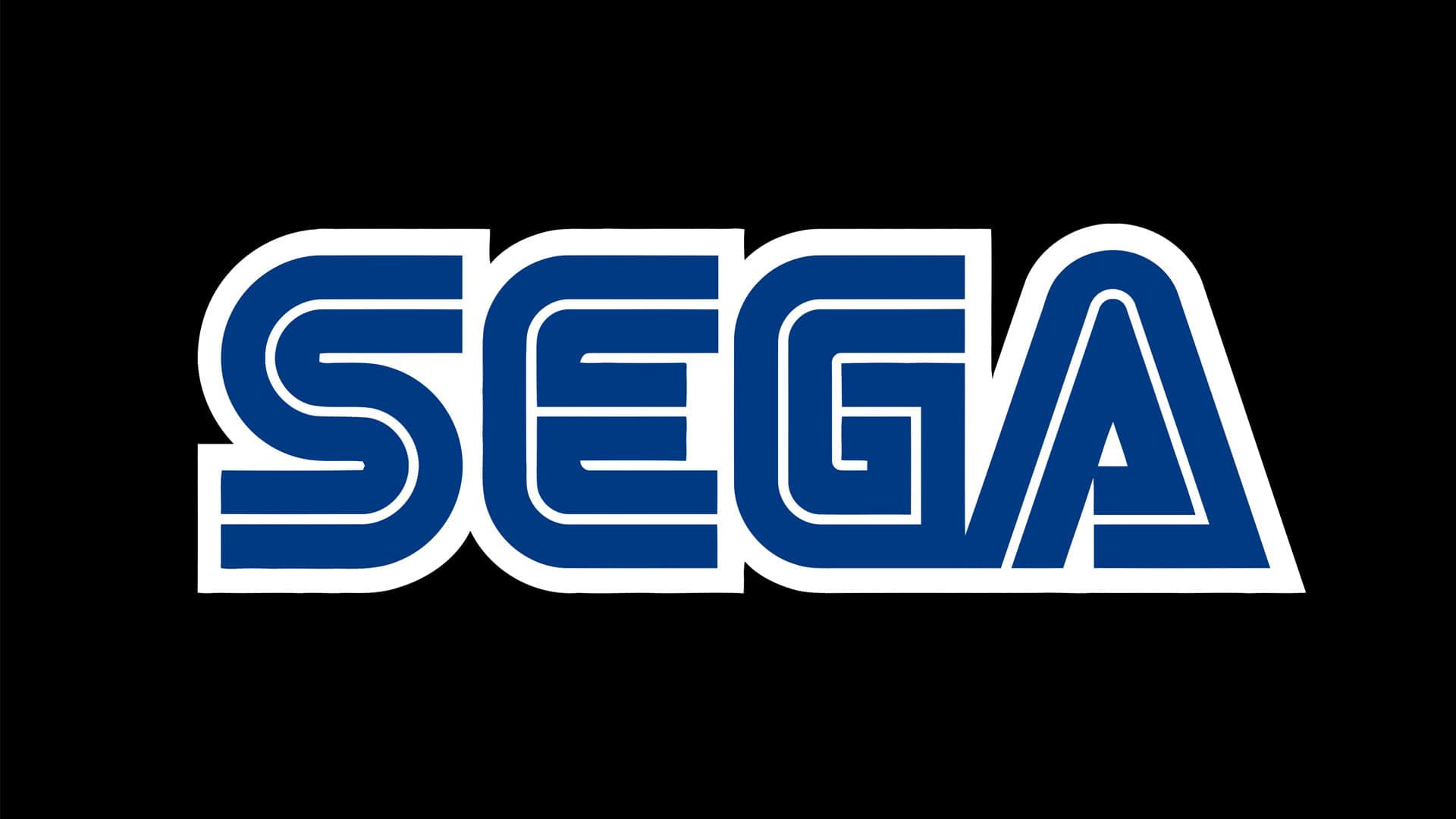Long before Sega would enter the home console market and make a massive splash in the West with the Sega Genesis and Sonic the Hedgehog, the company was already a household name among gamers for its groundbreaking arcade cabinets. Several of the most impressive and successful arcade cabinets of the late 80s were all games in Sega’s catalog, and the company would continue its innovation in the coin-op scene long after it entered the home console market. Following two back-to-back missteps with the botched launches of the Sega Saturn and the Sega Dreamcast, Sega would exit the hardware race entirely and begin to focus its efforts solely on publishing. As a result, several of the best Sega games are now available on just about every console and PC.
Hang-On
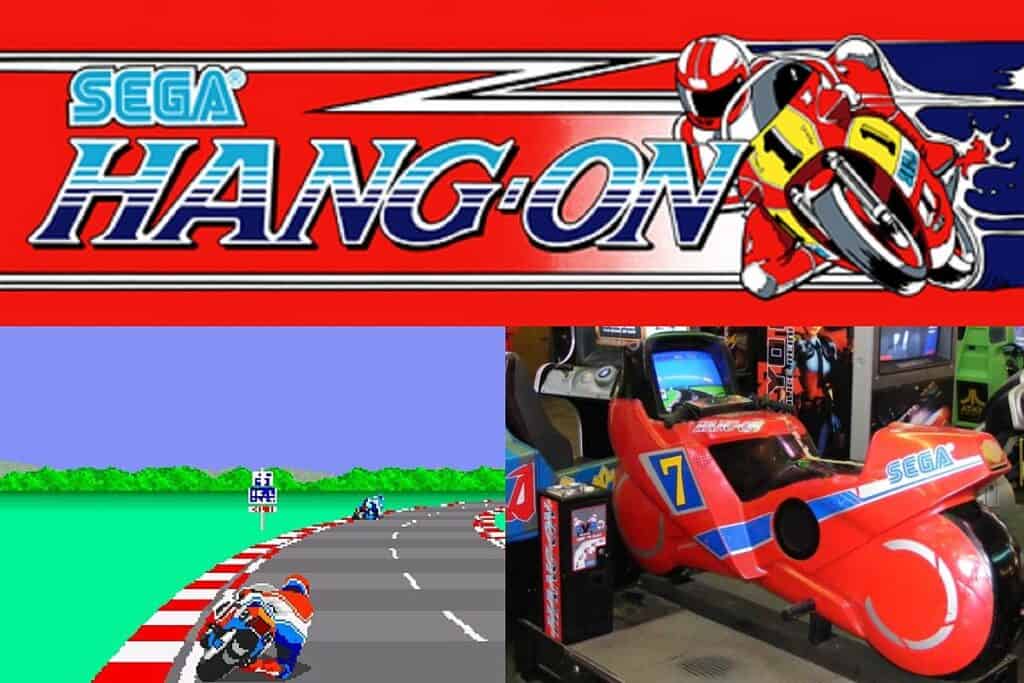
©Hang-On arcade hardware - Original
- Release Date — July 22, 1985
- Platforms — Arcade
- Review Aggregate Score — N/A
With how good it looks and how fun it still is to play, it’s hard to believe that Hang-On is almost a 40-year-old game. Even more impressive is its medium-defining arcade cabinet, which has players sit on a plastic mock-up of a motorcycle and lean left or right to simulate turning on the track. As both an arcade classic and an innovator in the very earliest iteration of motion controls, Hang-On is an all-time great in Sega’s library.
Outrun
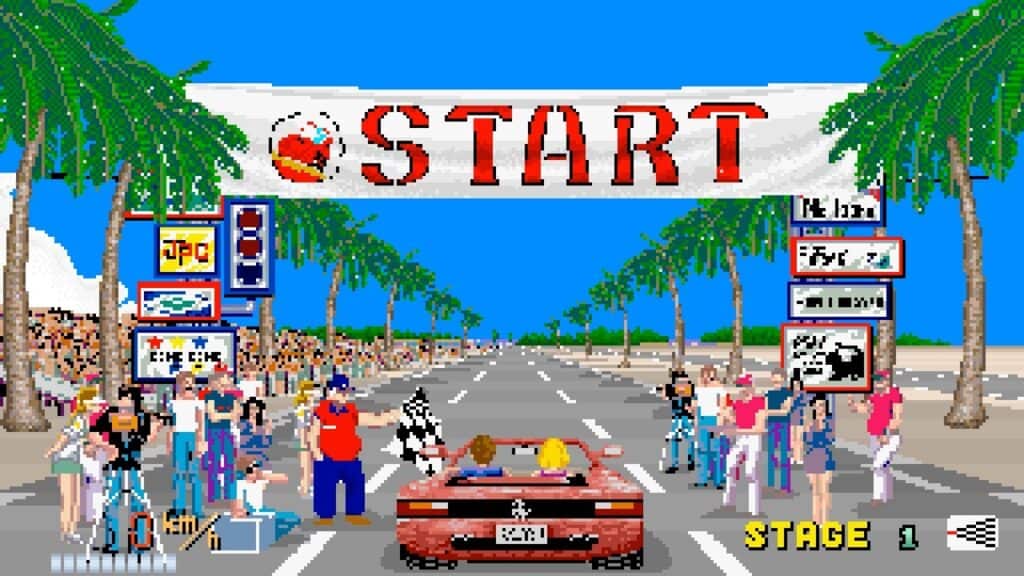
©Out Run gameplay screenshot - Original
- Release Date — September 4, 1986
- Platforms — Arcade
- Review Aggregate Score — N/A
Similar to Hang-On, Sega’s Out Run would quickly become one of the most popular arcade cabinets thanks to its satisfying take on the racing genre and unique arcade cabinet featuring a steering wheel. Later iterations of the cabinet would expand to include a plastic mock-up of the interior of the Ferrari that players drive in Out Run, but the game is an absolute blast regardless of which version of the coin-op hardware players happen to experience. In terms of establishing the blueprint for the modern arcade-style racing game, few titles are as important as Out Run.
After Burner
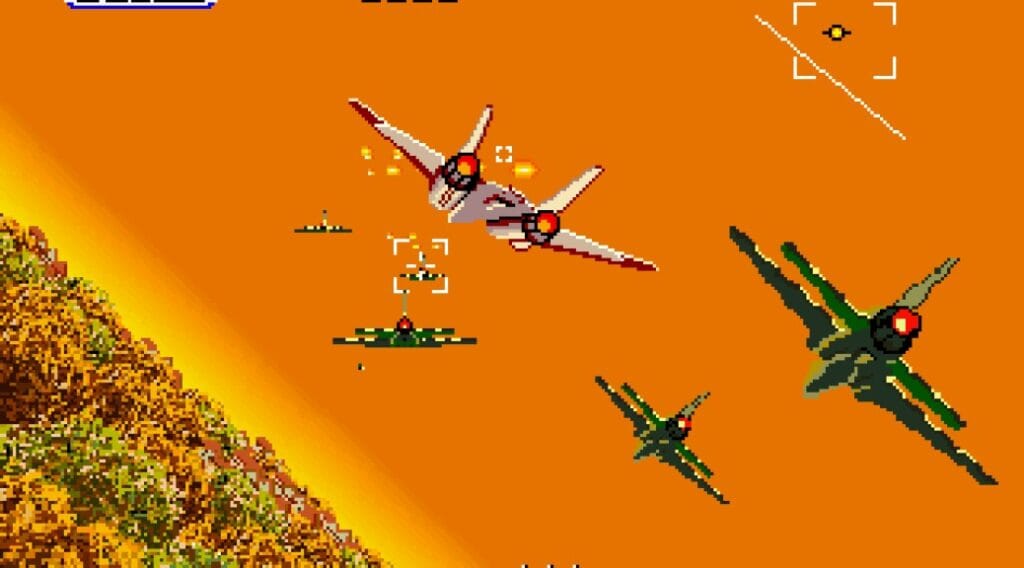
©After Burner gameplay screenshot - Original
- Release Date — July 17, 1987
- Platforms — Arcade
- Review Aggregate Score — N/A
Rounding out the trilogy of late-80s Sega arcade classics is the unmistakable flight combat game After Burner. Playing After Burner is a fun experience even in its console port thanks to tight controls and impressive 16-bit graphics, showcasing the genius of legendary game designer Yu Suzuki as he headed up Sega’s arcade division and produced countless classics. What made After Burner a must-play in the arcade, though, was its legendary rating cabinet that simulated the cockpit of the F-14 players pilot in the game. Even if you didn’t get to experience it at the time, the After Burner cabinet is immortalized in film thanks to James Cameron’s Terminator 2.
Alien Syndrome
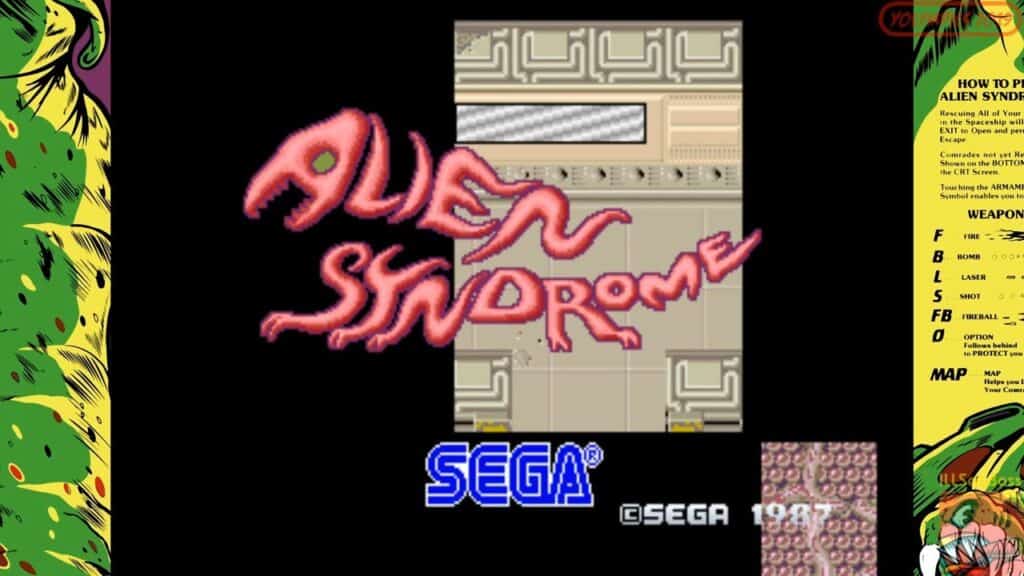
©Alien Syndrome gameplay screenshot - Original
- Release Date — October 18, 1987
- Platforms — Arcade
- Review Aggregate Score — N/A
Sega would release several early shmups and run-and-gun titles in the arcade that each contributed something to the genres’ continued growth, but Alien Syndrome is a standout and one of the company’s most successful cabinets of the era. Part of Alien Syndrome‘s appeal is its emphasis on co-op, with the game being much easier with two players than as a solo venture. Alien Syndrome is also important for being one of the best-selling titles on Sega’s second home console, the Master System, showcasing how skilled the company was with porting its arcade hits into players’ living rooms.
Altered Beast
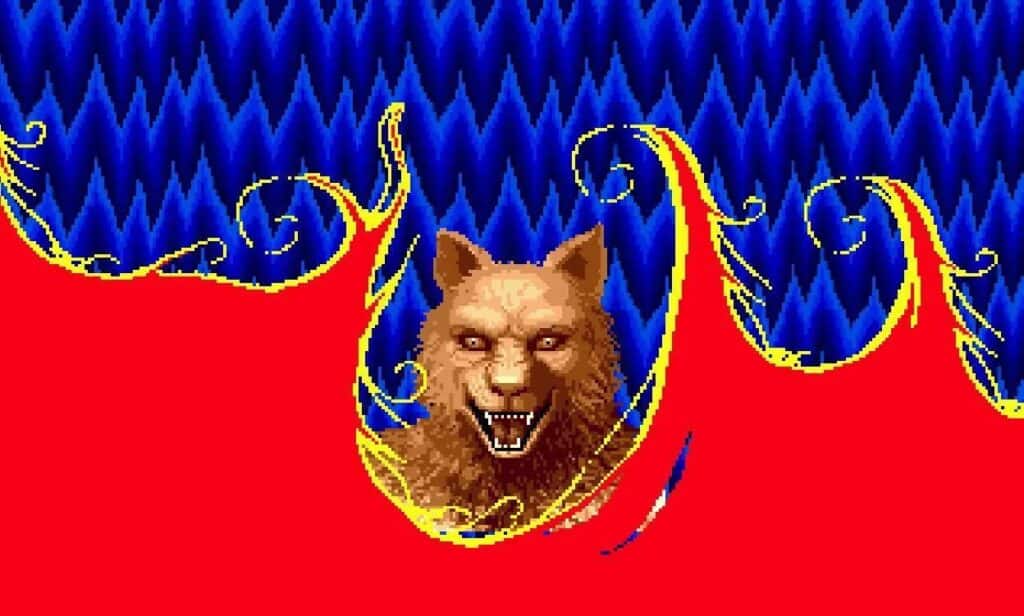
©Altered Beast gameplay screenshot - Original
- Release Date — June 14, 1988
- Platforms — Arcade, Sega Genesis
- Review Aggregate Score — 51% (Genesis) (Mixed or Average)
The Greek mythology-themed beat ’em up Altered Beast may have struggled to find an audience in Sega’s native Japan, but in the West (particularly in the US), the game would prove to be one of Sega’s most successful arcade cabinets. This would prompt Sega to have Altered Beast as the pack-in title for the release of the Mega Drive in the West, which it would rename as the Sega Genesis. As many American players’ first exposure to Sega and first game on their new Genesis consoles, Altered Beast is a significant visual and audio upgrade over even the best-looking NES titles of the era, sparking the earliest fires of the “console war” debate.
Space Harrier II
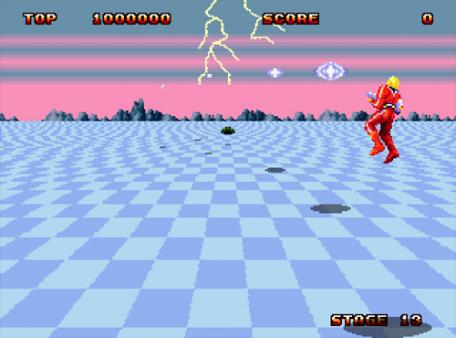
©Space Harrier II gameplay screenshot - Original
- Release Date — October 29, 1988
- Platforms — Sega Genesis
- Review Aggregate Score — 82% (Generally Favorable)
Another of Yu Suzuki’s games from his tenure as the head of Sega’s AM2 division, Space Harrier II is a visually impressive and fast-paced on-rails shooter that would end up being just as fun on the Genesis as it was in arcades. It’s actually the Sega Genesis version that rests prominently in the minds of players, with the arcade port being one of the earlier hits on the console and sitting alongside Altered Beast as another example of the parity between Sega’s home consoles and its arcade cabinets.
Golden Axe
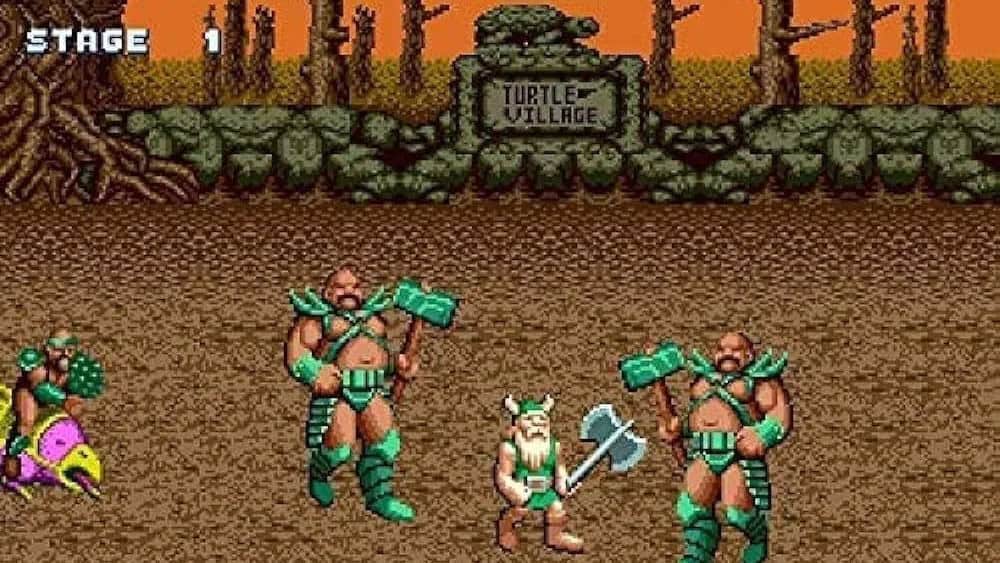
©Golden Axe gameplay screenshot - Original
- Release Date — January 27, 1989
- Platforms — Arcade, Sega Genesis
- Review Aggregate Score — 89% (Genesis) (Generally Favorable)
Although the series would eventually expand into a trilogy of games, it’s the original Golden Axe that stands as arguably the best game in the franchise and one of the most important beat ’em ups of all time. As one of the first fantasy-themed beat ’em ups, Golden Axe mixes the character designs and setting of a Dungeons & Dragons campaign with the gameplay of a classic coin-op beat ’em up, complete with some branching paths and plenty of secrets to uncover. Each of the playable characters has their own D&D-like stats and abilities, and playing through Golden Axe in co-op either in arcades or on the Genesis is one of the greatest experiences in the beat ’em up genre.
Castle of Illusion Starring Mickey Mouse
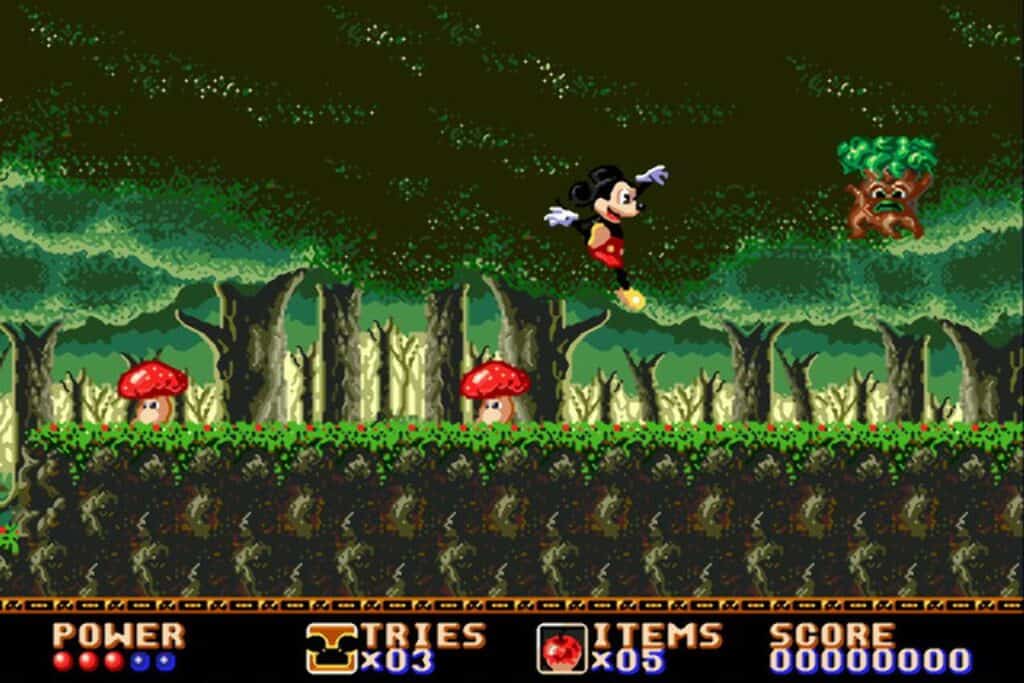
©Castle of Illusion Starring Mickey Mouse gameplay screenshot - Original
- Release Date — November 21, 1990
- Platforms — Sega Genesis
- Review Aggregate Score — 92% (Universal Acclaim)
As one of the first Sega first-party games to debut on the company’s home console rather than in arcades, Castle of Illusion is an important title in establishing a long-lasting partnership between Sega and Disney. It also happens to be an incredibly competent platformer with captivating visuals, great music, and a greater emphasis on careful platforming and combat than the speed and precision of Mario. It’s hard to play Castle of Illusion and not see its influence carry over into similar platformers like1995’s Rayman.
Phantasy Star III: Generations of Doom
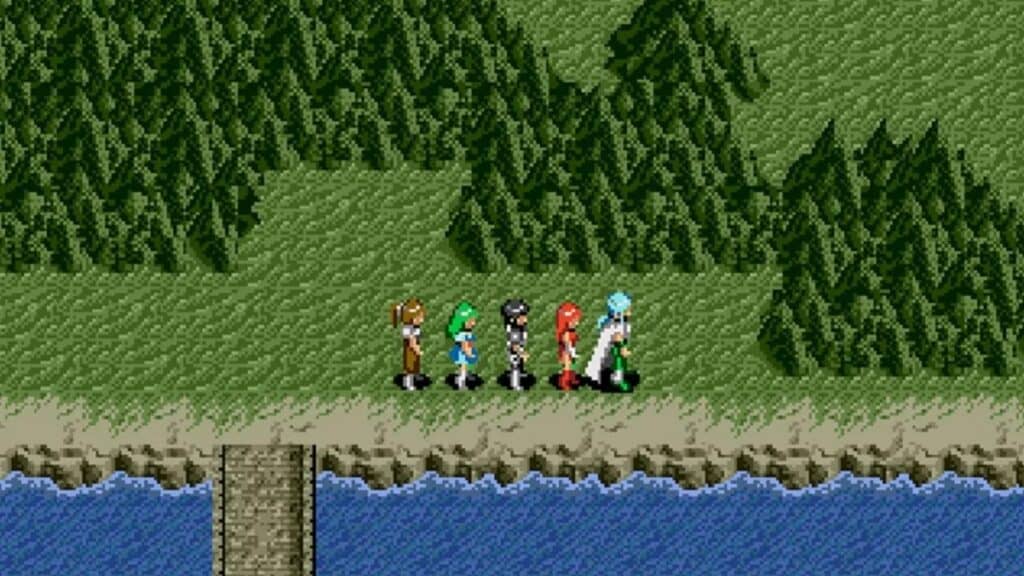
©Phantasy Star III gameplay screenshot - Original
- Release Date — April 21, 1990
- Platforms — Sega Genesis
- Review Aggregate Score — 90% (Universal Acclaim)
The first two Phantasy Star games are each excellent JRPGs that are vastly different from other genre contemporaries of the era like Dragon Quest or Final Fantasy. But it’s the third game in the Phantasy Star series where Sega’s unique sci-fi/fantasy hybrid JRPG really takes off. The characters and story of Phantasy Star III are the best that the series had seen up to that point, and the dungeon-crawling combat and first-person battling look and play better than in the first two games in the series. Phantasy Star IV is also a great game, but its impact is lessened by how massive of a leap there is between Phantasy Star II and Phantasy Star III.
Gain Ground
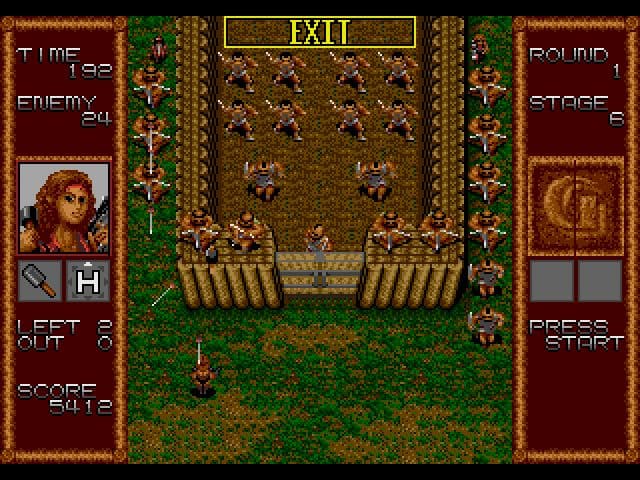
©Gain Ground gameplay screenshot - Original
- Release Date — January 3, 1991
- Platforms — Sega Genesis
- Review Aggregate Score — 80% (Generally Favorable)
Much like Alien Syndrome, Sega’s Gain Ground is a legendary run-and-gun title that takes place from a top-down perspective. However, where Alien Syndrome utilizes a sci-fi setting and focuses on quickly clearing screens of enemies, Gain Ground is all about methodical advancement through enemy lines in a medieval fantasy setting. If one were to take Capcom’s Commando and mix it with Sega’s Golden Axe, Gain Ground is what they’d end up with. Even in co-op, Gain Ground is a tough game that takes no prisoners, but its console port is a slightly more forgiving experience that shines on the Genesis.
Shining Force
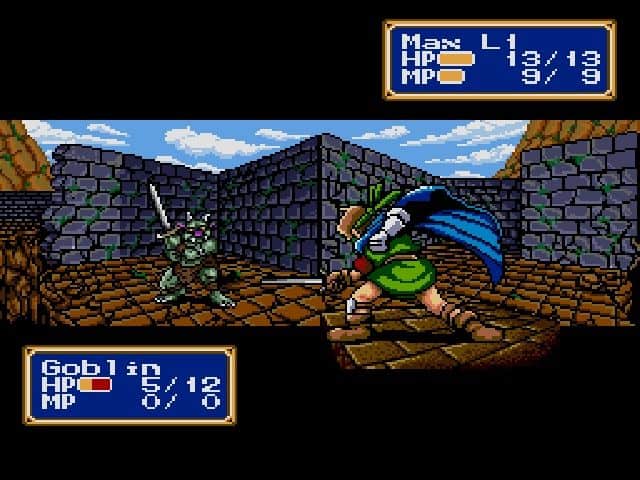
©Shining Force gameplay screenshot - Original
- Release Date — March 20, 1992
- Platforms — Sega Genesis
- Review Aggregate Score — 91% (Universal Acclaim)
Long before gamers in the West would ever get a localization of one of Nintendo’s Fire Emblem titles, Sega would introduce players to tactical RPGs with the excellent Shining Force. Like Fire Emblem or later titles such as Tactics Ogre, players complete missions that each contribute to an overarching story while taking a core group of adventurers into turn-based tactical battles where positioning and strategy are just as important as raw stats. Shining Force can present a high barrier to entry and tough learning curve, but few RPGs of the era are as satisfying once they finally “click”.
Kid Chameleon
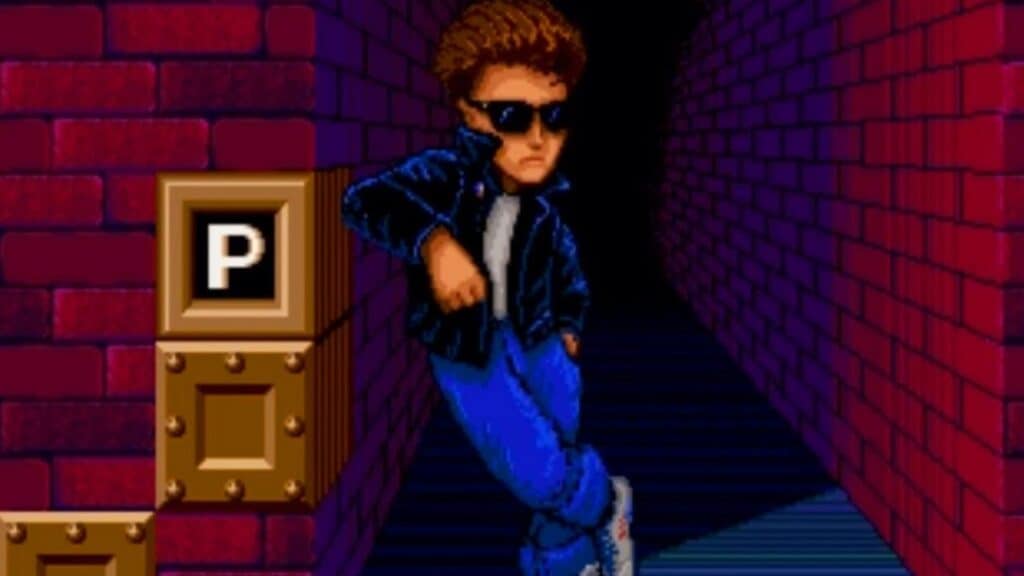
©Kid Chameleon gameplay screenshot - Original
- Release Date — May 29, 1992
- Platforms — Sega Genesis
- Review Aggregate Score — 79% (Generally Favorable)
Kid Chameleon is one of the titles on the Genesis that feels like it could only belong on the console, presenting players with so much early 90s attitude that it’s a wonder Sega didn’t use the titular character as their mascot instead of Sonic. The core gameplay loop of Kid Chameleon is that the main character can wear any number of hats or masks that transform how they move and attack in this action platformer. And with dozens of potential power-ups across hundreds of levels, it’s unlikely that players could see everything that Kid Chameleon has to offer in a single afternoon.
Thunder Force IV
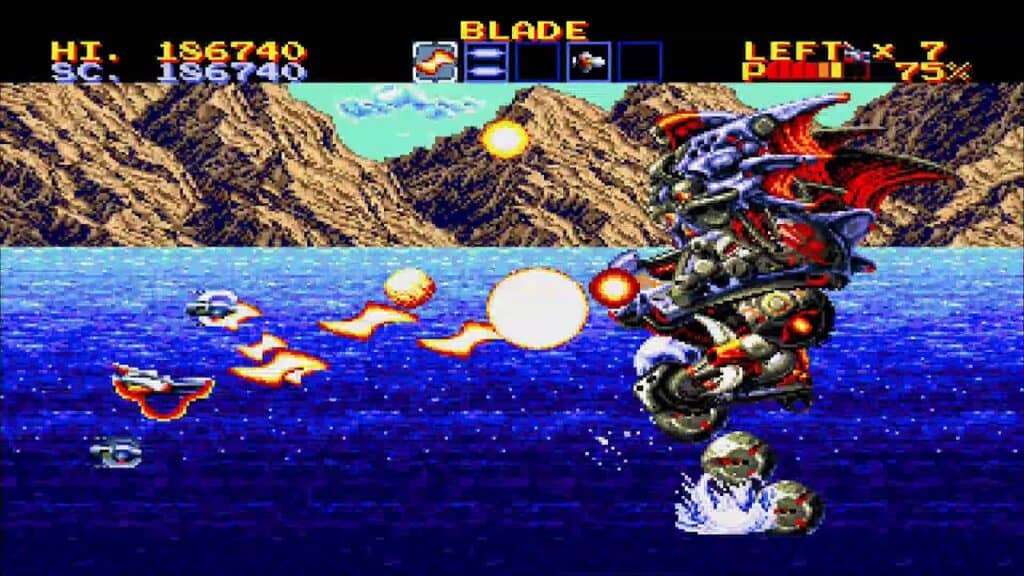
©Thunder Force IV gameplay screenshotq - Original
- Release Date — July 24, 1992
- Platforms — Sega Genesis
- Review Aggregate Score — 85% (Generally Favorable)
Though the TurboGrafx/PC Engine may have been the de-facto home for shmups in the 16-bit era, the Genesis was no slouch when it came to having some of the greatest shoot ’em-up titles. The Thunder Force series is one of the highlights and a first-party Sega effort in collaboration with developer Technosoft, and the best of the bunch is arguably Thunder Force IV. It may be more unforgiving than Thunder Force III, but the jaw-dropping visuals and incredible soundtrack more than makeup for the steep difficulty that the game presents players with. Thunder Force would actually get almost too easy with Thunder Force V and VI, which makes Thunder Force IV feel like the end of an era.
Ecco the Dolphin
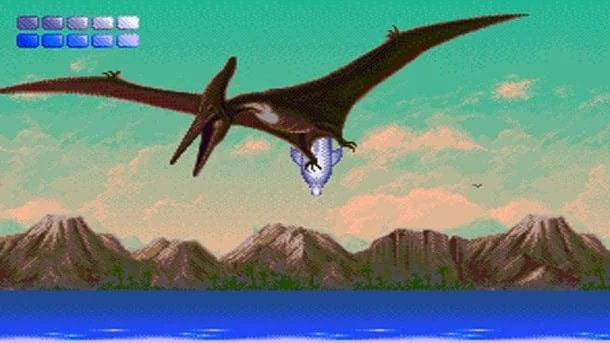
©Ecco the Dolphin gameplay screenshot - Original
- Release Date — July 29, 1992
- Platforms — Sega Genesis
- Review Aggregate Score — 76% (Generally Favorable)
If nothing else, Ecco the Dolphin is at least unique among 16-bit action platformers. Truthfully, it’s unique among all games in general. Playing as the titular bottle-nose dolphin, players discover a nefarious alien plot to kidnap all life on earth, resulting in one of the strangest and most unsettling games on the Genesis that also happens to be a tightly-tuned and satisfying experience. The greatest element of Ecco are the swimming physics, which do a surprisingly effective job of making the player feel like they have full command over the water.
Sonic the Hedgehog 2
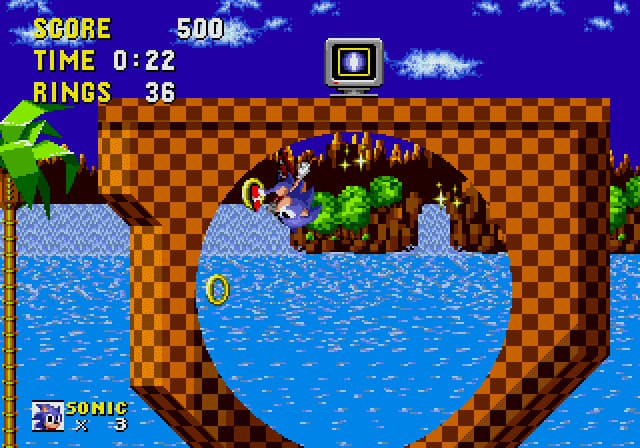
- Release Date — November 21, 1992
- Platforms — Sega Genesis
- Review Aggregate Score — 90% (Universal Acclaim)
The original Sonic the Hedgehog is a hugely important game in terms of helping to bring the Genesis greater market share in the West, but its sequel would make both Sega and Sonic unmistakable video game icons. Not only does Sonic the Hedgehog 2 improve every aspect of the original Sonic and go on to be the best 2D game in the franchise, its place as the pack-in game for the redesign of the Sega Genesis would see the console wars between Sega and Nintendo begin in earnest. Sonic 2 is faster, has more levels, includes one of the best video game soundtracks of all time, and illustrates that Sega does indeed do what “Nintendon’t”.
Streets of Rage 2
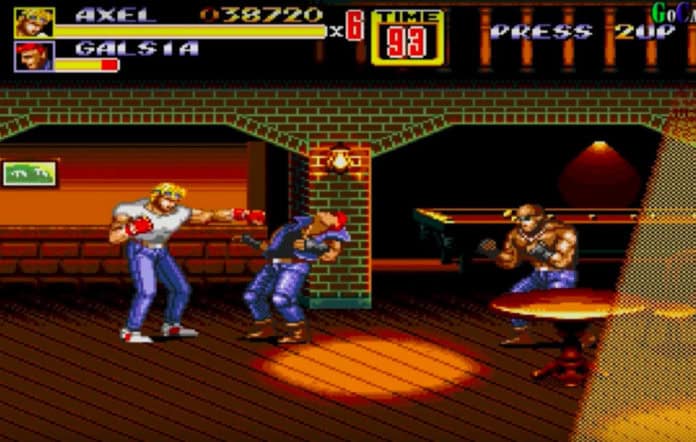
©Streets of Rage 2 gameplay screenshot - Original
- Release Date — December 15, 1992
- Platforms — Sega Genesis
- Review Aggregate Score — 91% (Universal Acclaim)
Like Sonic the Hedgehog 2, Streets of Rage 2 is an iconic sequel in the Sega Genesis library that improves upon the first game in the series in just about every way. The beat ’em up genre was one that traditionally fared better in arcades than on consoles, but Streets of Rage 2 bucks that trend by standing shoulder-to-shoulder with the greatest coin-op cabinets of the era all while fitting into a cartridge playable in your living room. Playing through Streets of Rage 2‘s excellent campaign solo is fun enough as it is, but the game truly comes into its own when a friend joins in for co-op complete with friendly fire and the ability to body slam your partner.
X-Men
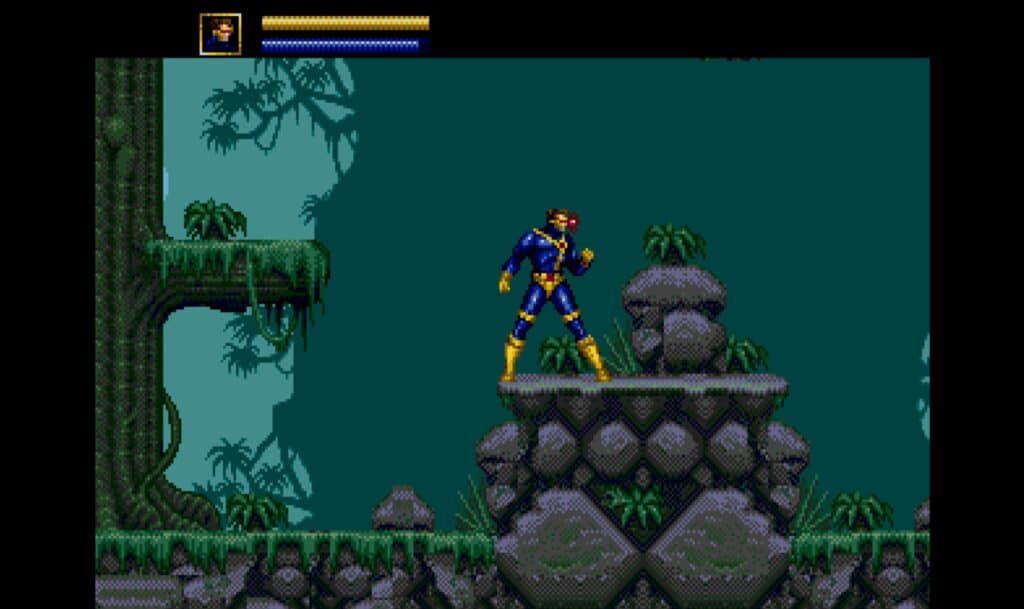
©X-Men gameplay screenshot - Original
- Release Date — March 8, 1993
- Platforms — Sega Genesis
- Review Aggregate Score — 67% (Mixed or Average)
The Genesis would end up being the home to not one but two excellent action-platformers based on Marvel Comics’ X-Men, giving the mutants their first worthwhile attempt at a video game adaptation after years of sub-par titles. Prior to 1993’s X-Men on the Genesis, the only other quality game using the X-Men license was Konami’s excellent 1992 arcade beat ’em up, but Sega’s first-party X-Men game differentiates itself with the ability to play as not one X-Man but the entire team and an emphasis on platforming as much as combat. X-Men is an incredibly hard game and somewhat obtuse in its level design, but the visuals and presentation place it as one of the more impressive games on Sega’s 16-bit console.
Shinobi III: Return of the Ninja Master
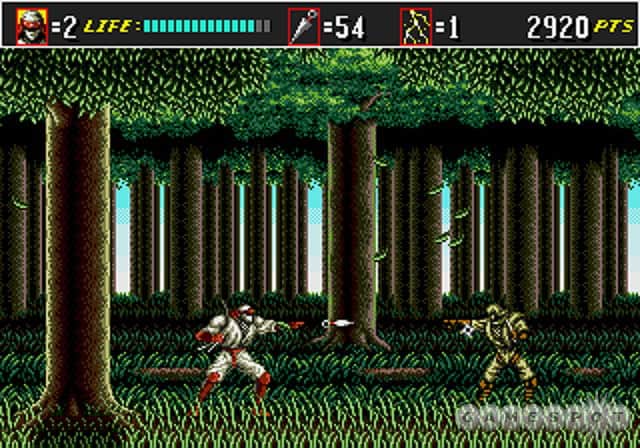
©Shinobi III gameplay screenshot - Original
- Release Date — August 22, 1993
- Platforms — Sega Genesis
- Review Aggregate Score — 85% (Generally Favorable)
The best of the Shinobi games is the Genesis-exclusive third entry in the series, Shinobi III: Return of the Ninja Master. Although it’s the third Shinobi game on the Sega Genesis, it’s actually the direct sequel to the original Shinobi with Shadow Dancer being a port of an unrelated Sega arcade cabinet retrofitted to the franchise. Like the first Shinobi, Shinobi III is a side-scrolling action platformer that has more than a striking resemblance to Tecmo’s Ninja Gaiden series, but its more approachable difficulty and twin emphases on ranged and melee combat help to separate it from its most obvious comparison.
Virtua Fighter
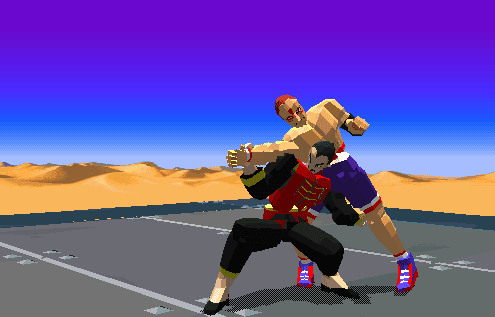
©Virtua Fighter gameplay screenshot - Original
- Release Date — December 1993
- Platforms — Arcade
- Review Aggregate Score — N/A
Sega’s continued presence in the arcade scene would result in the company continuing to innovate in that space as Nintendo established itself as the clear frontrunner of the console wars. One of Sega’s major victories during this era is its successful invention of the world’s first full-3D fighting game in the incredible Virtua Fighter. The Virtua Fighter series is a mechanically-complex and visually impressive fighting game for its time whose release serves as a pivotal moment in fighting games and video games in general, and the series would only continue to get better.
Daytona USA
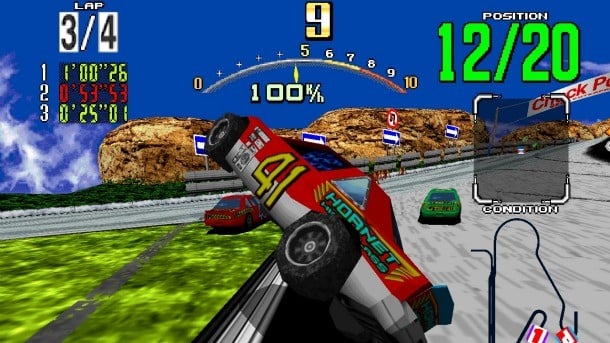
©Daytona USA gameplay screenshot - Original
- Release Date — March 1994
- Platforms — Arcade
- Review Aggregate Score — N/A
Along with fighting games, racing games would prove to be Sega’s most successful type of arcade cabinets during the mid-90s. One of the most popular and best of them all is Daytona USA, Sega’s arcade racing game using full-3D tracks and environments. Though Namco’s Ridge Racer would release the same year and impress in many of the same ways that Daytona USA did, there’s little denying that Sega’s experience with arcade racers (beginning with Out Run a decade prior) resulted in them having the superior arcade racing game of 1994.
X-Men 2: Clone Wars
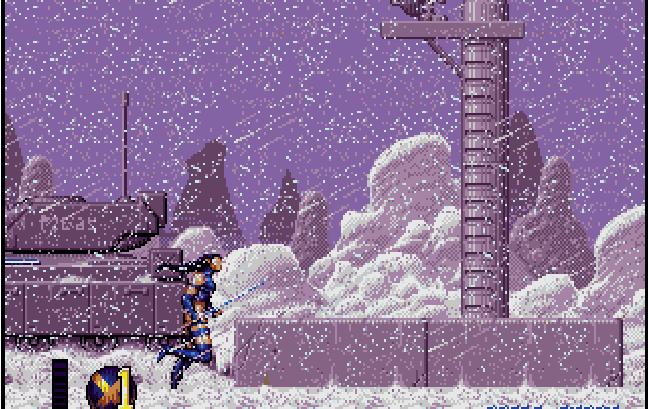
©X-Men 2: Clone Wars gameplay screenshot - Original
- Release Date — February 1995
- Platforms — Sega Genesis
- Review Aggregate Score — 79% (Generally Favorable)
One of the last first-party Sega games released on the Genesis before the company focused its console division on the Sega Saturn was the sequel to the excellent X-Men, X-Men 2: Clone Wars. Like its predecessor, players get to control the entire X-Men Blue Team in Clone Wars, playing out parts of the “Deadly Genesis” arc from the 1991 relaunch of the X-Men comic. Unlike X-Men, though, X-Men 2: Clone Wars has a much more forgiving difficulty curve and plenty of readily available health pick-ups to make it an approachable experience and one of the best action platformers on the console.
Dragon Force
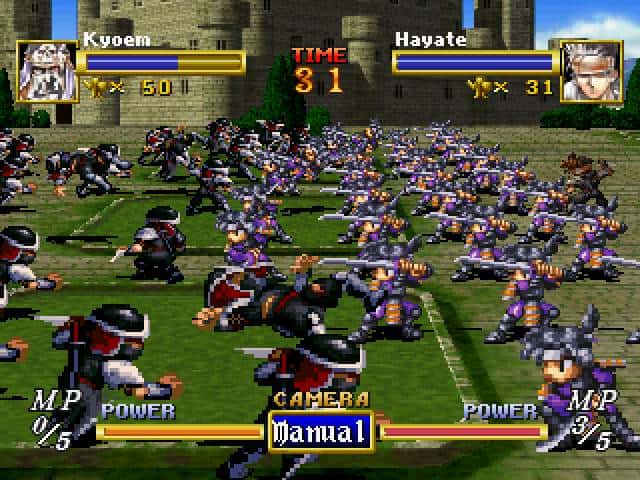
©Dragon Force gameplay screenshot - Original
- Release Date — March 29, 1996
- Platforms — Sega Saturn
- Review Aggregate Score — 90% (Universal Acclaim)
Even though Ogre Battle would beat it to the punch in mixing the tactical turn-based RPG with large-scale warfare, that blend is arguably perfected in the Sega Saturn’s Dragon Force. This cult-classic strategy/RPG hybrid features battles that play out in real-time only to then pause when the player needs to issue a command. As a result, players get to see the immediate impact of their actions play out on the battlefield, needing to adjust accordingly based on how battles dynamically unfold. And, like both Ogre Battle and Tactics Ogre, Dragon Force features a captivating story that strings players along with a mix of political intrigue and dark fantasy.
Panzer Dragoon Zwei
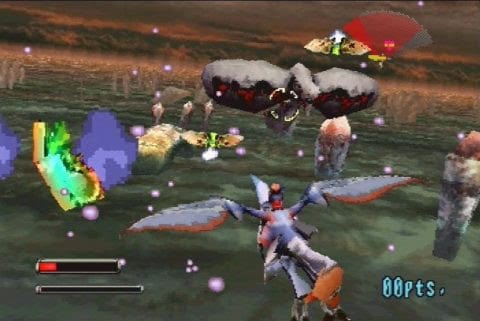
©Panzer Dragoon Zwei gameplay screenshot - Original
- Release Date — April 17, 1996
- Platforms — Sega Saturn
- Review Aggregate Score — 88% (Generally Favorable)
The second Panzer Dragoon game is the better of the two series entries on the Sega Saturn, improving the shooting mechanics and difficulty curve of the first game and acting as a companion piece to the later Saturn classic Panzer Dragoon Saga. An on-rails shooter with a unique lock-on mechanic, Panzer Dragoon Zwei shares a lot in common with some other popular shmups on the Saturn (Layer Section, Soukyugurentai), but its presentation and story immediately elevate it above its contemporaries.
Die Hard Arcade
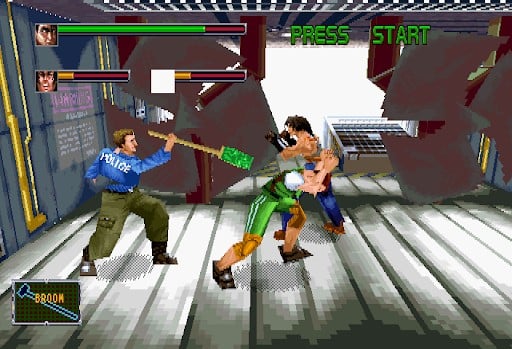
©Die Hard Arcade gameplay screnshot - Original
- Release Date — July 1996
- Platforms — Arcade, Sega Saturn
- Review Aggregate Score — 76% (Saturn) (Generally Favorable)
Though it didn’t originate as an adaptation of the popular Die Hard films in Japan, the Western release of the first game in Sega’s Dynamite Detective series makes good use of the Die Hard license even if it does so only in name. Regardless of its localization, Die Hard Arcade is an excellent 3D brawler that features character models and environmental assets rendered in 3D with all action still taking place on a horizontal 2D plane. The game would get a sequel on the Dreamcast (Dynamite Cop), but the Saturn original is both one of Sega’s best beat ’em ups and arcade ports.
The House of the Dead
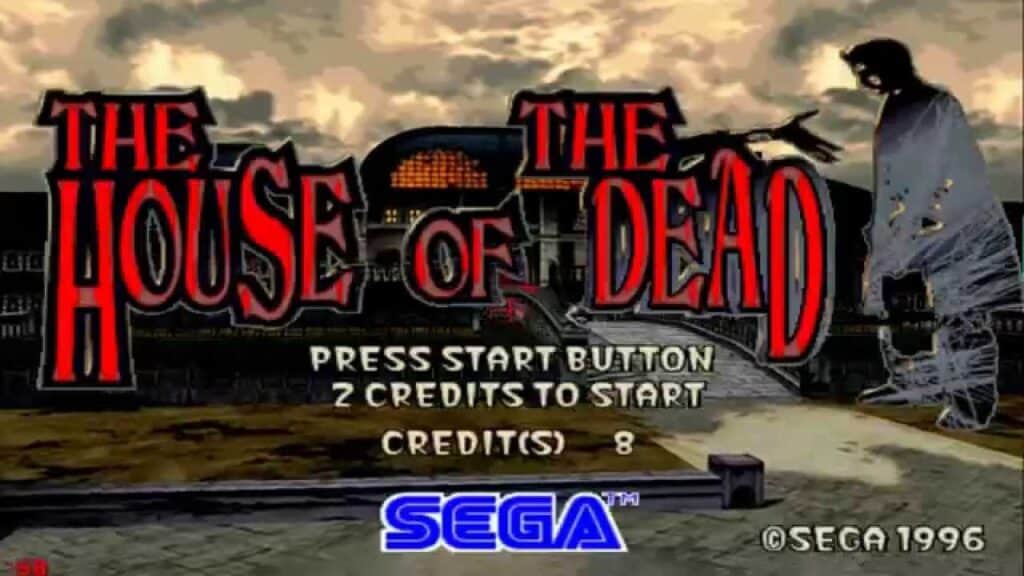
©The House of the Dead gameplay screenshot - Original
- Release Date — September 13, 1996
- Platforms — Arcade
- Review Aggregate Score — N/A
Sega had already reinvented the arcade light gun game with the excellent Virtua Cop, but The House of the Dead would become one of Sega’s biggest hits ever and significantly raise the bar for arcade light gun games in its wake. Players assume the role of one of two FBI agents as they make their way through a mysterious mansion and destroy all manner of monstrous science experiments. The main enemy type are zombies, which gives The House of the Dead more than a passing resemblance to another hit from 1996, Resident Evil. That said, The House of the Dead‘s different genre and greater focus on action would make it a nice alternative to the methodical progress, puzzles, and survival elements of Capcom’s Resident Evil.
Fighters Megamix
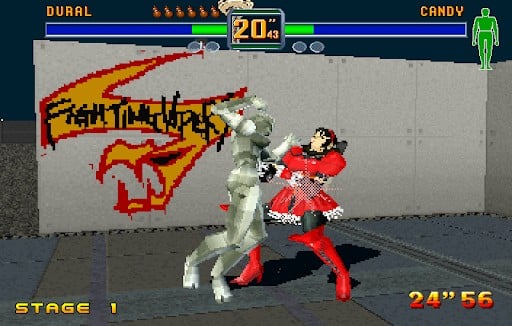
©Fighters Megamix gameplay screenshot - Original
- Release Date — May 13, 1997
- Platforms — Sega Saturn
- Review Aggregate Score — 88% (Generally Favorable)
Sega’s release of Fighters Megamix is one of those games that proves it pays to be patient. After porting both Virtua Fighter 2 and Fighting Vipers to the Saturn, Sega had the genius idea to combine the full roster of fighters from each along with every single stage from both games into one single title. Fighters Megamix takes the best parts of both its halves and ends up being a fighting game more than the sum of its parts, with the mechanics and gameplay somehow surpassing both Fighting Vipers and Virtua Fighter 2.
Panzer Dragoon Saga
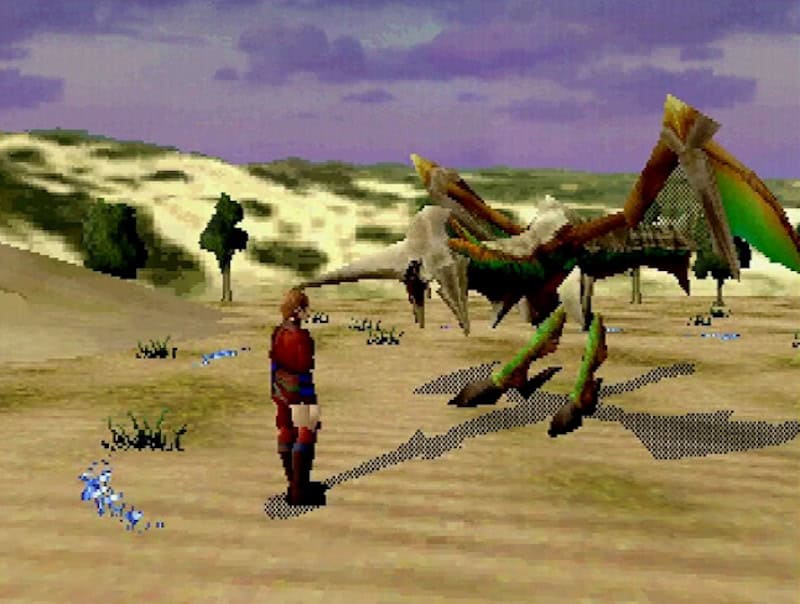
©Panzer Dragoon Saga gameplay screenshot - Original
- Release Date — May 5, 1998
- Platforms — Sega Saturn
- Review Aggregate Score — 92% (Universal Acclaim)
One of the great tragedies of the Saturn’s failure in the West is the overlooking of Panzer Dragoon Saga, which stands shoulder-to-shoulder with Final Fantasy VII as one of the greatest JRPGs of the era. Development on the game has taken on legendary status thanks to the stress the team worked under, resulting in two team members dying during production and the game shipping late in the Saturn’s life cycle. Despite its troubled development, though, Panzer Dragoon Saga ends up being an incredible JRPG with a truly captivating story, excellent presentation, and some interesting RPG mechanics and progression systems.
Sonic Adventure
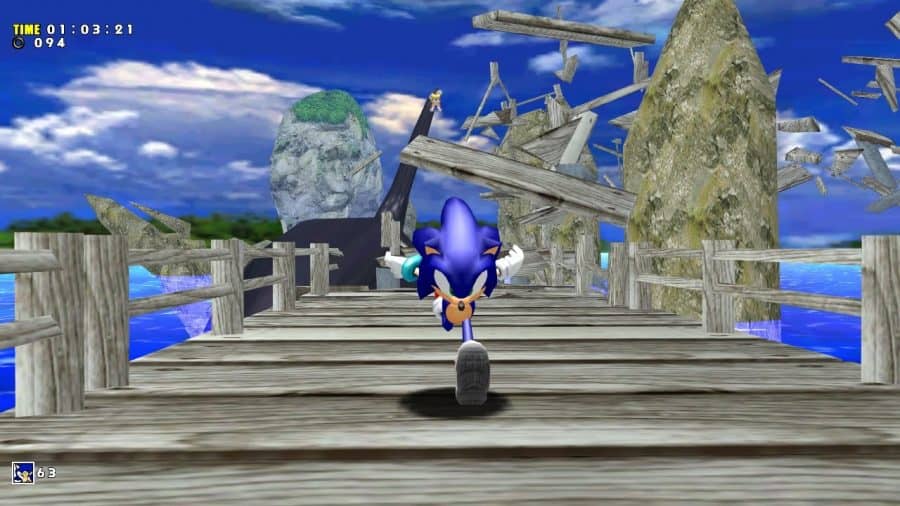
©Sonic Adventure gameplay screenshot - Original
- Release Date — December 23, 1998
- Platforms — Dreamcast
- Review Aggregate Score — 87% (Generally Favorable)
Though there are Sonic fans who will insist Sonic Adventure 2 is the best 3D game in the series, the first Sonic Adventure deserves a spot on any list of the best Sega games thanks to its place as the first great 3D Sonic. Sega had tried on both the Sega CD and the Sega Saturn to make a 3D Sonic game, and both instances would produce mixed results. Sonic Adventure sees Yuji Naka and Sonic Team finally grasp what it takes to make Sonic work in 3D, and it served as one of the best launch titles for the Dreamcast and an impressive display of 6th generation hardware.
Sega Bass Fishing
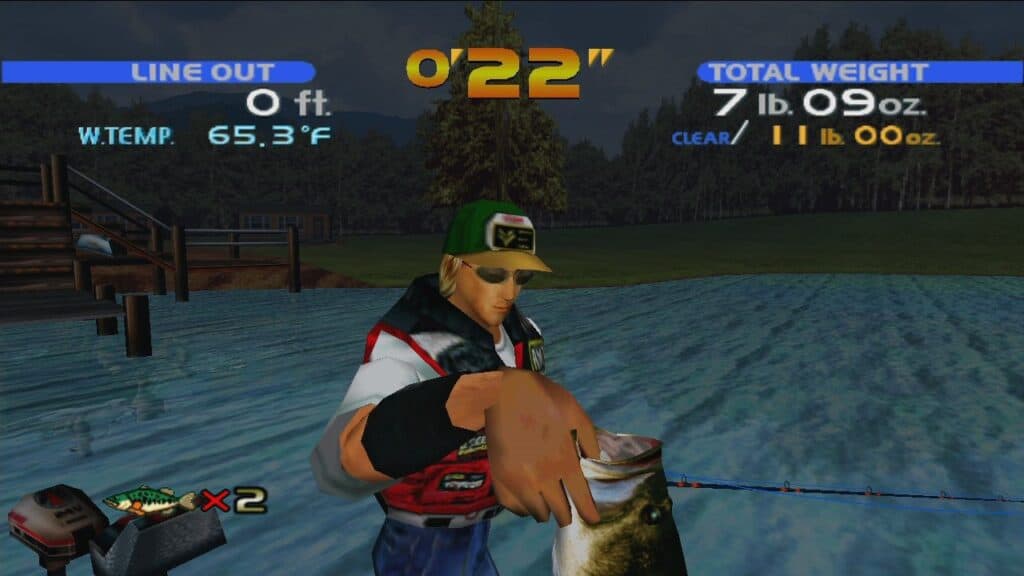
©Sega Bass Fishing gameplay screenshot - Original
- Release Date — October 6, 1999
- Platforms — Dreamcast
- Review Aggregate Score — 79% (Generally Favorable)
The Dreamcast ended up being the system where Sega’s home console hardware finally caught up to the massive strides the company had made in the arcades, resulting in the system being home to some of the greatest arcade ports in history. One of the first is the Dreamcast release of Sega Bass Fishing, which not only makes a strong case for purchasing the first-party fishing rod controller but also ends up being one of the more enjoyable games on the console thanks to its addictive-yet-relaxing arcade take on sport fishing.
Sega Rally 2
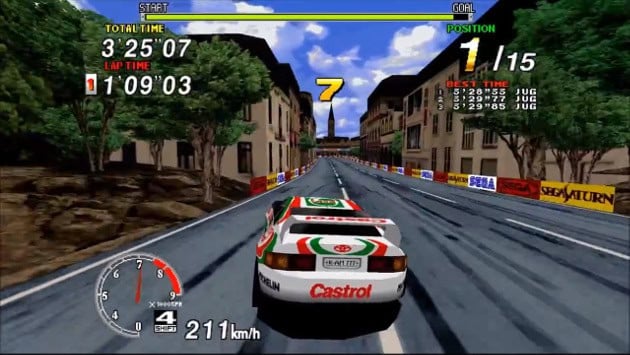
©Sega Rally 2 gameplay screenshot - Original
- Release Date — November 20, 1999
- Platforms — Dreamcast
- Review Aggregate Score — 82% (Generally Favorable)
Like Sega Bass Fishing, Sega Rally 2 is one of the arcade ports to the Dreamcast that actually surpasses the coin-op cabinet to become the superior version of the game. Sega Rally 2 is yet another of the company’s 3D arcade racing games that shows them at the height of their talent in the genre, delivering a fast and endlessly fun driving game that is still worthwhile today.
Crazy Taxi
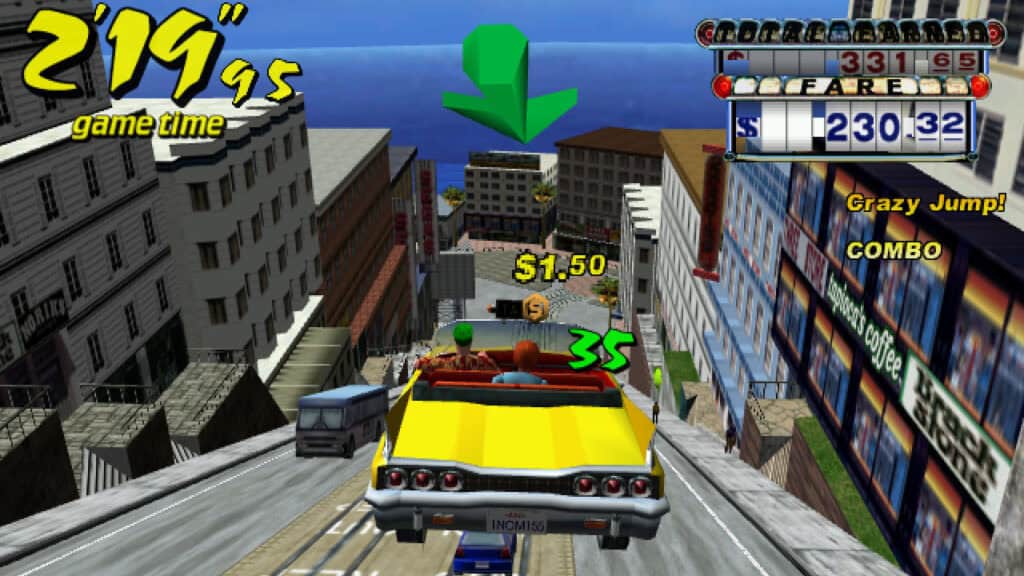
©Crazy Taxi gameplay screenshot - Original
- Release Date — February 2, 2000
- Platforms — Dreamcast
- Review Aggregate Score — 90% (Universal Acclaim)
Crazy Taxi is both the best arcade port on the Dreamcast and one of the best Dreamcast games period, establishing itself as the console’s must-have title in its first full year on retail shelves. The frantic and fast-paced arcade driving of Crazy Taxi pairs perfectly with the game’s bright visuals and an iconic soundtrack by The Offspring, and the title exists today as a time capsule of a bygone era and a relic of the Dreamcast’s greatness.
Virtua Tennis
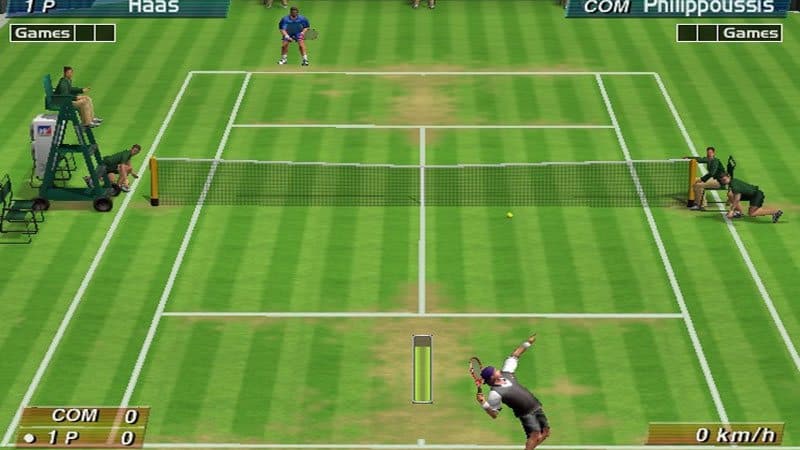
©Virtua Tennis gameplay screenshot - Original
- Release Date — July 12, 2000
- Platforms — Dreamcast
- Review Aggregate Score — 92% (Universal Acclaim)
Before the Xbox had Top Spin as one of its best titles, Sega would introduce players to the wonders of arcade tennis with the excellent Virtua Tennis. What makes Virtua Tennis a standout among both tennis games and sports games, in general, is how the title rests squarely between the accessible pick-up-and-play nature of an arcade title and the realistic physics and attention to detail of a sports simulation game. In terms of multiplayer games on the Dreamcast, it didn’t get much better than Virtua Tennis.
Shenmue
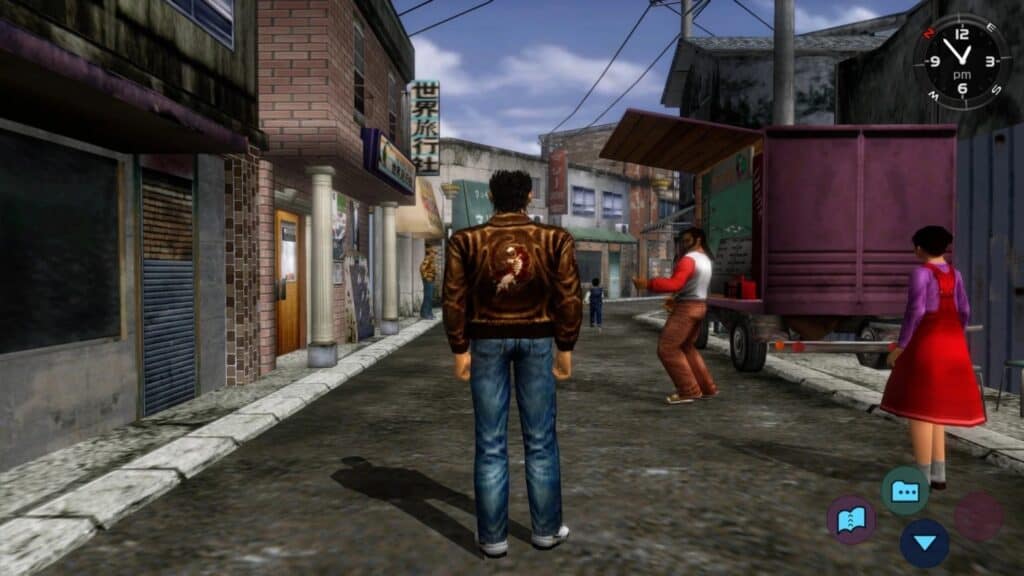
©Shenmue gameplay screenshot - Original
- Release Date — December 29, 1999
- Platforms — Dreamcast
- Review Aggregate Score — 89% (Generally Favorable)
The release of Shenmue as Sega’s last game of the millennium is fitting considering it was arguably the company’s most ambitious project to date and spearheaded by none other than Yu Suzuki himself. Not only does Shenmue draw the blueprint for the modern open-world sandbox, it also introduces several gameplay mechanics that would become incredibly common in subsequent generations such as the “quick-time event” or QTE. The Shenmue series fails to reach the full scope of its ambition, but the first game is undeniably important in helping to steer the direction of action-adventure games in the 6th generation and beyond.
Jet Set Radio
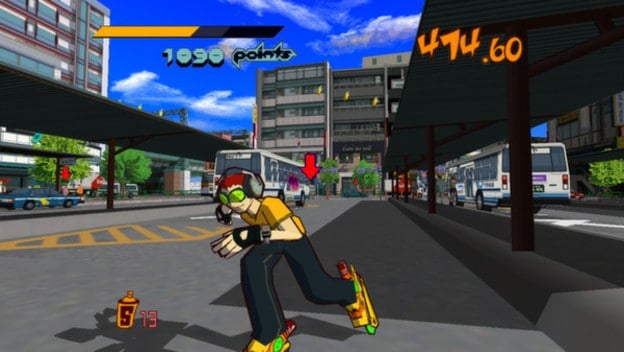
©Jet Set Radio gameplay screenshot - Original
- Release Date — June 29, 2000
- Platforms — Dreamcast
- Review Aggregate Score — 92% (Universal Acclaim)
One of the most obvious things about Jet Set Radio is that it’s a game that feels perfectly at home on the Dreamcast. Part Tony Hawk’s Pro Skater and part Mario Paint, Jet Set Radio is a hybrid skating and graffiti adventure game where players traverse a highly stylized and beautifully designed cel-shaded rendition of a futuristic Tokyo and fight against rival gangs for turf and bragging rights. The title’s gameplay never quite lives up to its style, but Jet Set Radio‘s amazing visuals and soundtrack still hold up to this day.
Skies of Arcadia
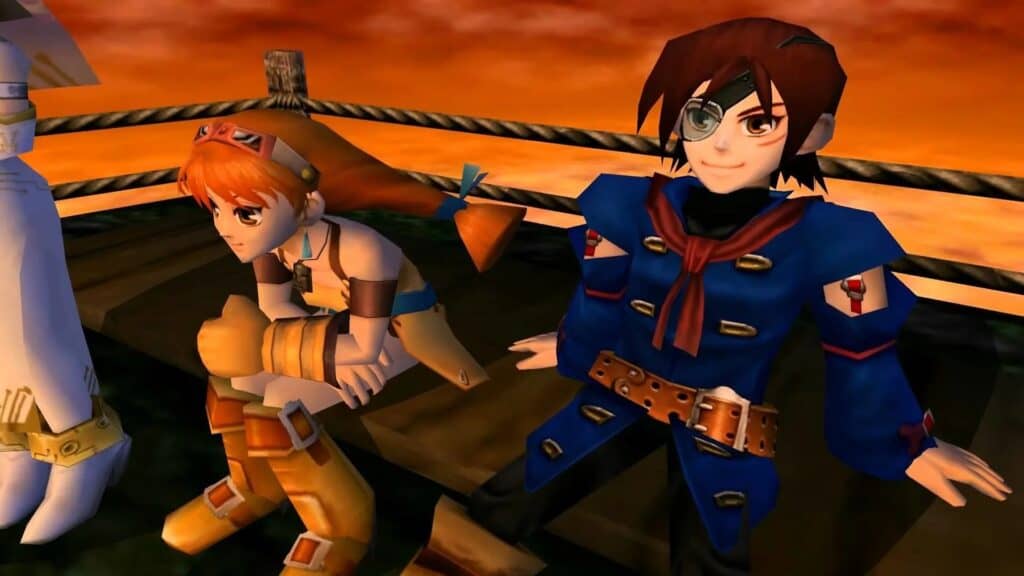
©Skies of Arcadia gameplay screenshot - Original
- Release Date — November 14, 2000
- Platforms — Dreamcast
- Review Aggregate Score — 93% (Universal Acclaim)
Along with Panzer Dragoon Saga, Skies of Arcadia is another first-party Sega JRPG that has largely gone criminally overlooked. However, unlike Panzer Dragoon Saga, Skies of Arcadia at least received ports on other consoles (specifically, the GameCube) that helped it reach a wider audience. Skies of Arcadia understands that exploration and adventure are key components of the best RPGs and works hard to incorporate those ideas into practically every facet of its gameplay and narrative.
Shinobi
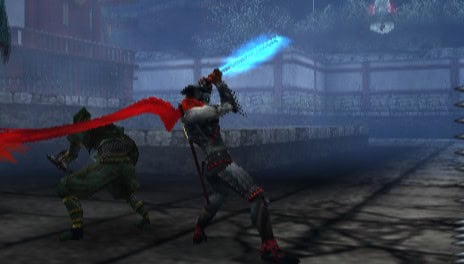
©Shinobi gameplay screenshot - Original
- Release Date — November 12, 2002
- Platforms — PlayStation 2
- Review Aggregate Score — 71% (Mixed or Average)
The demise of the Dreamcast gave way to Sega becoming a third-party game developer and publisher for competitors’ hardware, and one of the earliest Sega games to make it to another platform is the series reboot of Shinobi. This newest take on the long-running Sega franchise reintroduces the series as a character action game akin to Devil May Cry, and the title’s emphasis on stealth sets it apart from other genre contemporaries of the era. The signature mechanic of needing to feed Shinobi’s sword with the blood of enemies is a unique idea, but it ultimately ends up doing the game a disservice thanks to the pacing issues it creates.
Super Monkey Ball
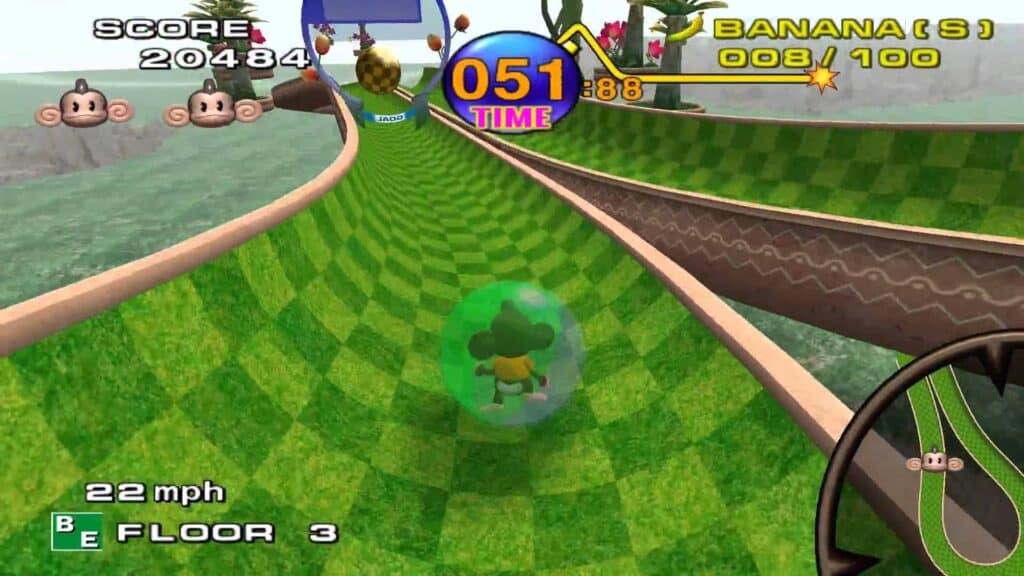
©Super Monkey Ball gameplay screenshot - Original
- Release Date — November 18, 2001
- Platforms — GameCube
- Review Aggregate Score — 89% (Generally Favorable)
Super Monkey Ball essentially amounts to what would happen if you were to mix Sonic the Hedgehog and Marble Madness while also simultaneously being nothing like either of those games. It’s an arcade puzzle platformer with a super satisfying sense of speed and some impressive physics, but the real draw of Super Monkey Ball is how deceptively simple the game begins only to gradually ramp up in difficulty, with later levels seemingly impossible to clear. It might have taken a while for Sega to produce games for its rival Nintendo, but Super Monkey Ball is an excellent first title out of the gate.
Virtua Fighter 4: Evolution
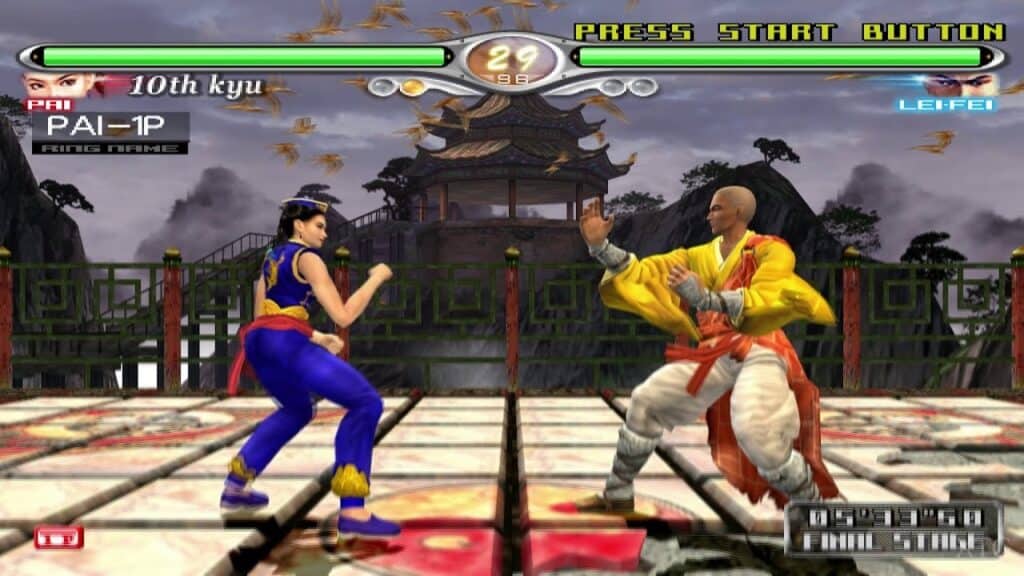
©Virtua Fighter 4 gameplay screenshot - Original
- Release Date — August 12, 2003
- Platforms — PlayStation 2
- Review Aggregate Score — 93% (Universal Acclaim)
The Virtua Fighter series has always stood apart from competitors thanks to its impressively complex mechanics and realistic depictions of a wide variety of martial arts styles, and the series has never been better than it is in Virtua Fighter 4: Evolution. The base version of Virtua Fighter 4 on PS2 was an excellent arcade port and one of the best fighters on the console, but Virtua Fighter 4: Evolution trounces it in every possible way. The most significant upgrade that Evolution makes over the base game is its Quest Mode, but there’s a slew of other improvements and additions that make it the definitive version of one of the PS2’s best fighting games.
F-Zero GX
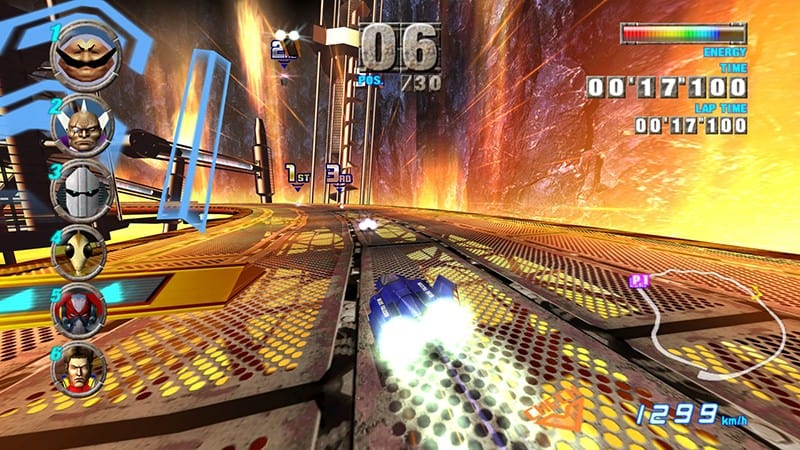
©F-Zero GX gameplay screenshot - Original
- Release Date — August 25, 2003
- Platforms — GameCube
- Review Aggregate Score — 89% (Generally Favorable)
The first new F-Zero game in years wouldn’t come from Nintendo itself but instead from Sega, utilizing its one-time competitor’s competence at crafting arcade racers to develop what is arguably the best game in the F-Zero series. Though it began as a console game on the GameCube, the success of F-Zero GX would lead to Sega and Nintendo partnering again on an arcade cabinet version of the game (F-Zero AX) that had cross-play functionality with the console release. F-Zero needs to make a comeback at some point, and in a perfect world, we’d see Sega and Nintendo partner up to do the series justice once again.
Condemned: Criminal Origins
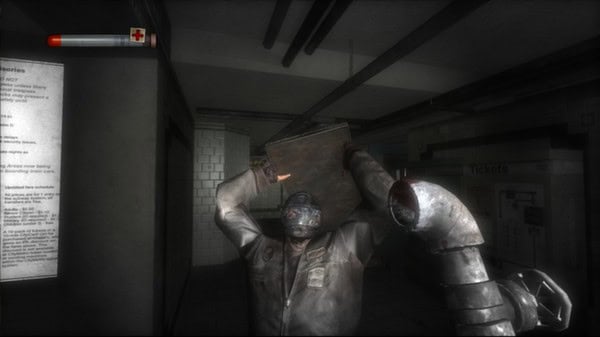
©Condemned: Criminal Origins gameplay screenshot - Original
- Release Date — November 22, 2005
- Platforms — Xbox 360
- Review Aggregate Score — 81% (Generally Favorable)
The first-person survival-horror game Condemned: Criminal Origins might have been developed by Monolith (the same studio behind the excellent F.E.A.R.) but Sega’s publishing and distribution of the title help it earn a place as one of the best and most unique titles the company ever released. Part first-person melee combat game and part detective simulator, Condemned sees players take on the role of an FBI forensics expert as he tracks down a serial killer. The game has aged a little poorly since its launch, but some of the scares on offer in Condemned have yet to be topped.
Valkyria Chronicles
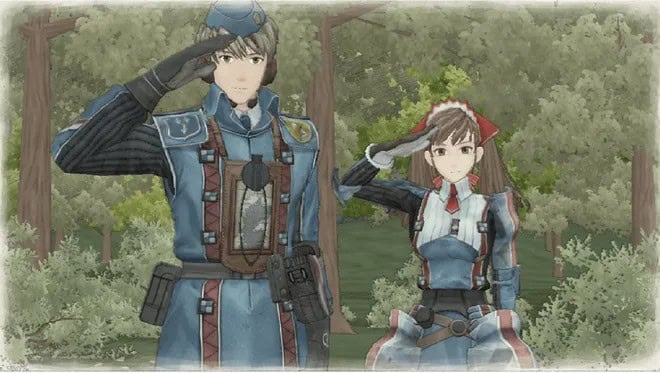
©Valkyria Chronicles gameplay screenshot - Original
- Release Date — November 4, 2008
- Platforms — PlayStation 3
- Review Aggregate Score — 86% (Generally Favorable)
The Valkyria Chronicles series is an interesting hybrid between a turn-based tactical RPG and a third-person shooter that utilizes a unique alternate-world take on World War I as its backdrop. The first and fourth entries in the franchise are arguably the best games in the series, but the original Valkyria Chronicles earns a place as one of the best Sega games for being the first title to introduce its potent genre combination and for its excellent story.
Vanquish
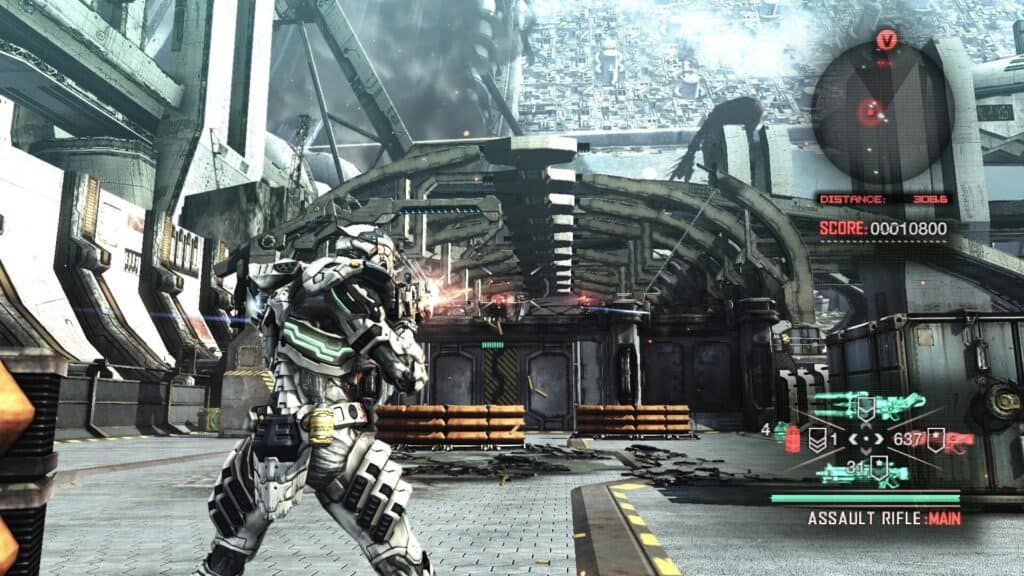
©Vanquish gameplay screenshot - Original
- Release Date — October 19, 2010
- Platforms — PC, PlayStation 3, Xbox 360
- Review Aggregate Score — 84% (Generally Favorable)
Platinum Games’ Vanquish, produced in collaboration with Sega, is one of the more unique and inspired third-person shooters of the era. Although Vanquish is technically a cover-shooter, the player character’s cybernetically-enhanced exo-suit gives them the ability to boost around the battlefield in a recumbent position to then snap behind cover and quickly take out foes. As a result, Vanquish is almost like a blend between an extreme sports game and a third-person shooter, and the chaos unfolding at any moment during the game’s frenetic campaign only serves to strengthen that comparison.
Binary Domain
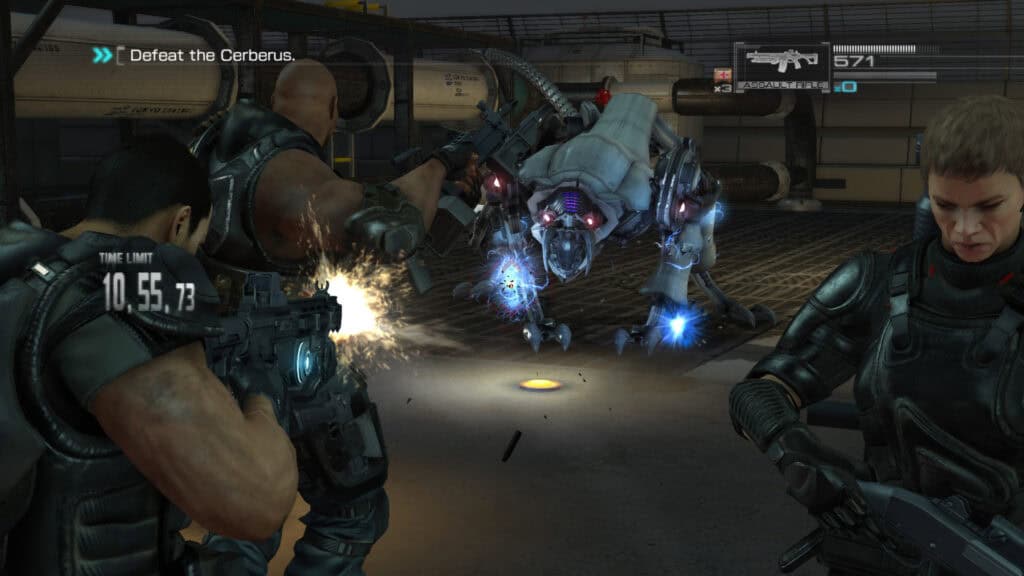
©Binary Domain gameplay screenshot - Original
- Release Date — February 28, 2012
- Platforms — PC, PlayStation 3, Xbox 360
- Review Aggregate Score — 74% (Mixed or Average)
Coming from RGG Games, the same internal Sega studio behind the Yakuza series, Binary Domain is perhaps one of the most critically overlooked third-person shooters of the 7th console generation. While its gameplay is fairly standard fare as far as third-person shooters go, the game’s story is surprisingly prescient and incredibly relevant in today’s world as advancements in AI give way to concerns over future implications.
Phantasy Star Online 2
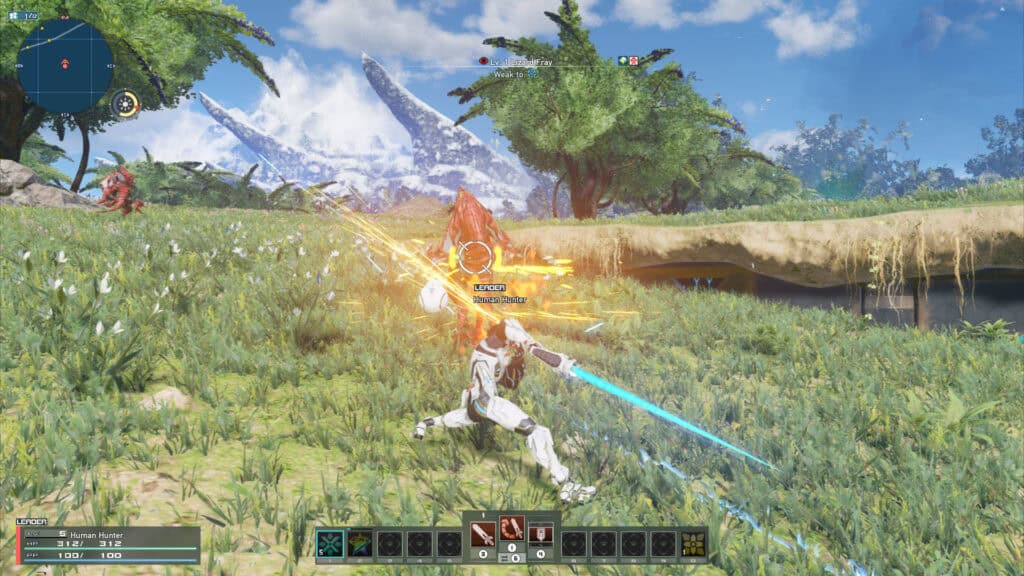
©Phantasy Star Online 2 gameplay screenshot - Original
- Release Date — July 4, 2012
- Platforms — PC (later ported to PS Vita, PS4, Xbox One, and Nintendo Switch)
- Review Aggregate Score — 82% (Generally Favorable)
The original Phantasy Star Online was a surprisingly competent MMORPG that made good use of the Phantasy Star license and helped guide the development of the genre in the pre-World of Warcraft era. Its sequel was equally as impressive, earning millions of dedicated players between its launch on PC and later ports to consoles. Unfortunately, the New Genesis update effectively removed much of the actual RPG gameplay and combat in favor of character and homestead customization, but the title still has a dedicated player base.
Sonic & All-Stars Racing Transformed
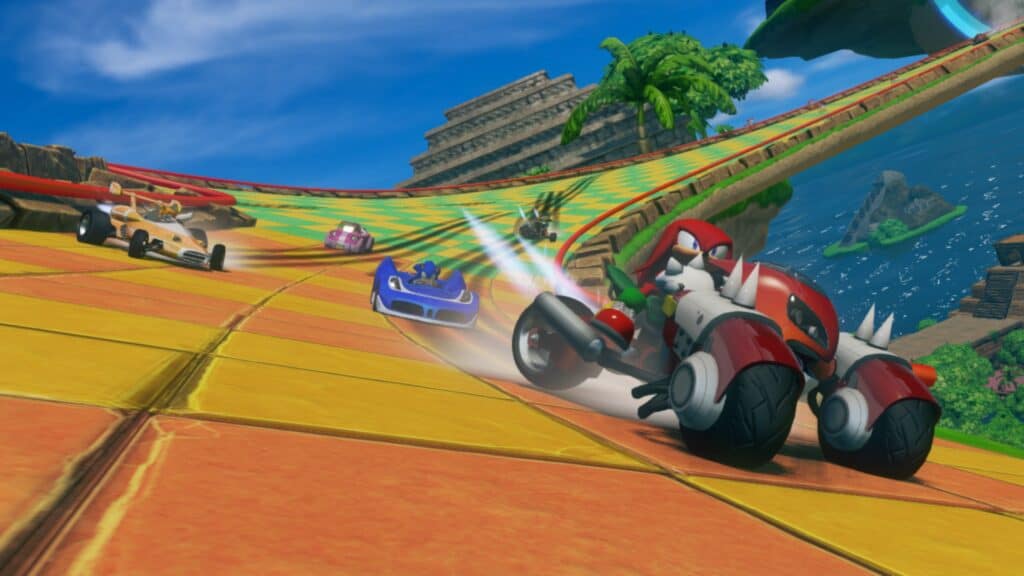
©Sonic & All-Stars Racing Transformed gameplay screenshot - Original
- Release Date — November 16, 2012
- Platforms — PlayStation 3, Wii U, Xbox 360
- Review Aggregate Score — 82% (Generally Favorable)
Kart racing games, despite being numerous, can’t seem to present a single entry that can hold a candle to the greatness of Mario Kart. One of the few exceptions is Sega’s Sonic & All-Stars Racing Transformed, which not only features a roster chock full of iconic Sega characters but also has some excellent tracks that fully utilize the game’s transforming karts. It’s not as fluid or as well-balanced as Mario Kart 8, but it is one of the few kart racing games to even come close.
Alien Isolation
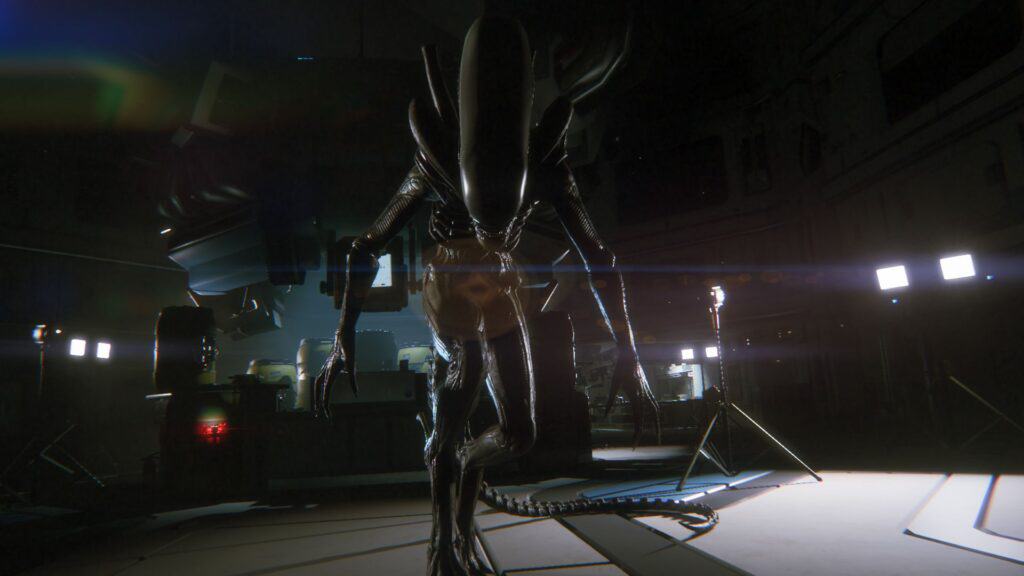
©Alien Isolation gameplay screenshot - Original
- Release Date — October 6, 2014
- Platforms — PC, PlayStation 3, PlayStation 4, Xbox 360, Xbox One
- Review Aggregate Score — 81% (Generally Favorable)
One of the best survival-horror games of the last decade and the best game to ever feature the Alien license, Alien Isolation is an exercise in pure terror. The game is also essentially “Alien 1.5″, with players taking on the role of Ellen Ripley’s daughter as she searches for any clues as to the whereabouts of the Nostromo and the truth behind the Weiland-Yutani corporation’s interest in LV-426. Aside from its excellent story setup, though, Alien Isolation presents one of the most terrifying and deadly games of hide-and-seek as players use stealth and subterfuge to escape sudden-death at the hands of the Xenomorph.
Yakuza 0
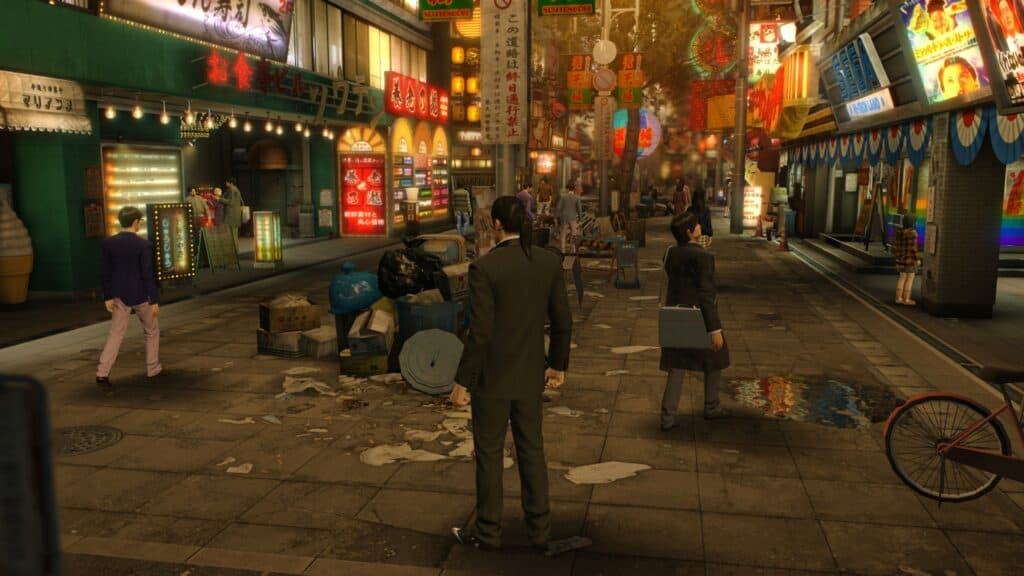
©Yakuza 0 gameplay screenshot - Original
- Release Date — March 12, 2015
- Platforms — PC, PlayStation 3, PlayStation 4, Xbox One
- Review Aggregate Score — 86% (Generally Favorable)
The Yakuza series was already fully established by 2015, which makes the decision to make a prequel prologue to the first game an interesting move on RGG’s part. Whatever the case, getting to experience the formative journey that helped shape both Kazuma Kiryu and Goro Majima goes down as one of the best games in the Yakuza series, thanks in no small part to its incredibly engaging and dense open world and phenomenal combat.
Sonic Mania
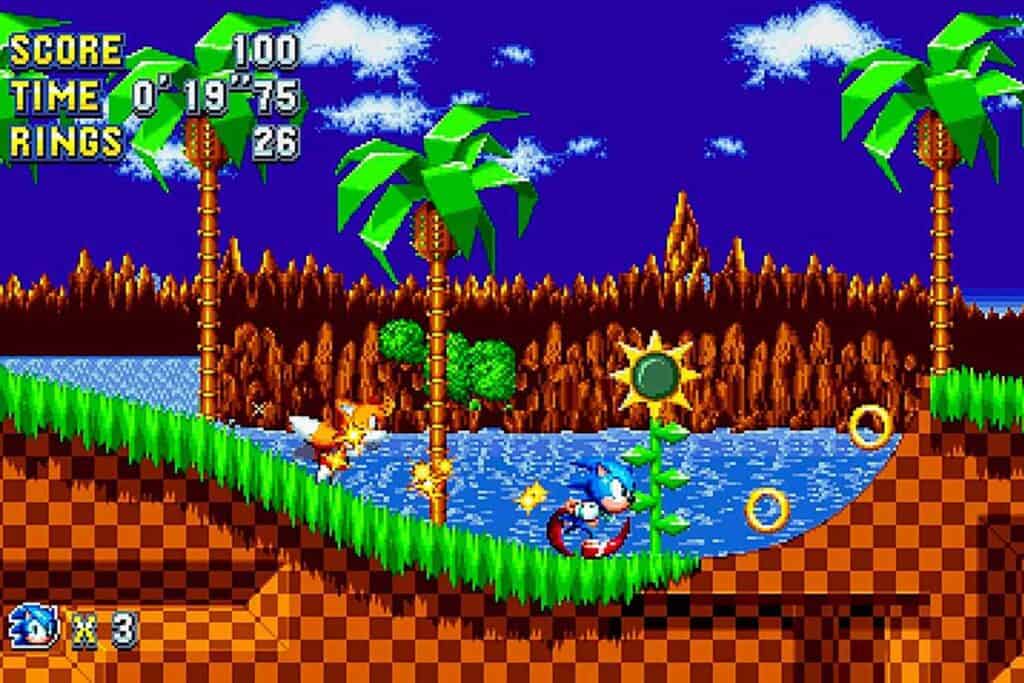
©Sonic Mania gameplay screenshot - Original
- Release Date — August 15, 2017
- Platforms — PlayStation 4, Nintendo Switch, Xbox One
- Review Aggregate Score — 86% (Generally Favorable)
For whatever reason, Sega couldn’t seem to produce a competent Sonic game for more than a decade. So when it came time to make a new 2D Sonic, Sega wisely outsourced the project to a popular fan-game developer. Sonic Mania is both a “greatest hits” of the 2D Sonic games and a reminder of how a great Sonic game is peak platforming.
Yakuza Kiwami 2
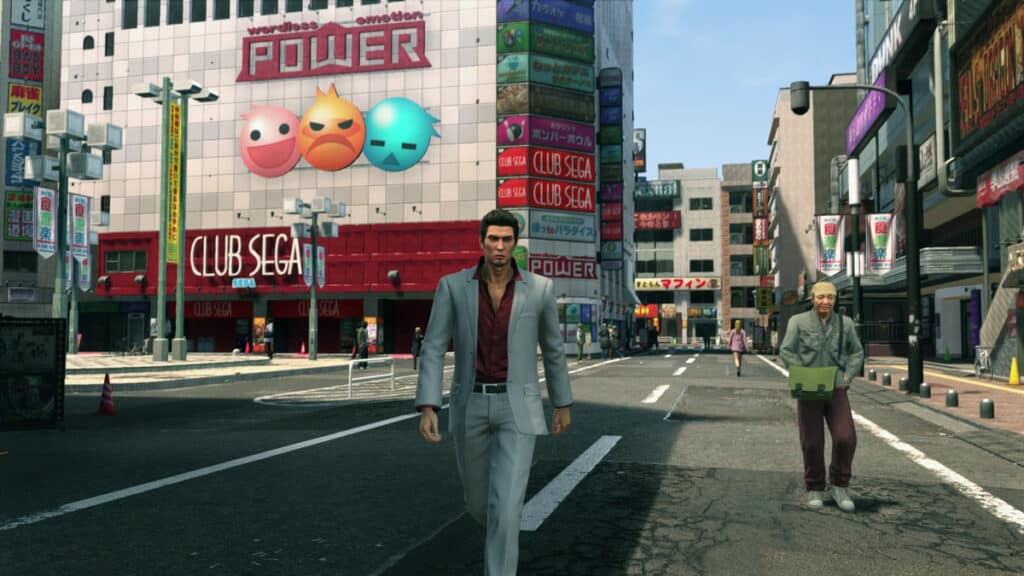
©Yakuza Kiwami 2 gameplay screenshot - Original
- Release Date — August 28, 2018
- Platforms — PlayStation 4
- Review Aggregate Score — 85% (Generally Favorable)
Both Yakuza Kiwami and Yakuza Kiwami 2 are excellent remakes of the first and second games in the Yakuza series, but Kiwami2 wins out as one of the all-time greatest Sega games thanks to its incredible story and development of the protagonist, Kazuma Kiryu. Additionally, Kiwami 2‘s reimagined Kamurocho and Sotenbori are two of the densest and most interesting open-world sandboxes across any action-adventure game.
Yakuza: Like a Dragon
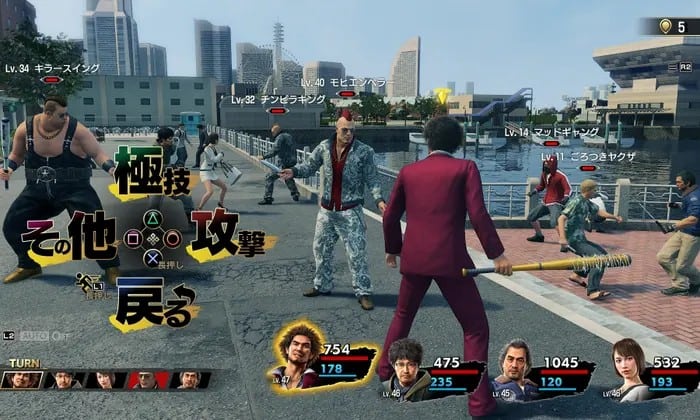
©Yakuza: Like a Dragon gameplay screenshot - Original
- Release Date — November 10, 2020
- Platforms — PC, PlayStation 4, Xbox One, Xbox Series X/S
- Review Aggregate Score — 89% (Generally Favorable)
After 7 mainline entries, how could Sega improve on the Yakuza series? The answer — switch up protagonists and transform the game from a beat ’em up to a turn-based RPG. As odd as that might sound, the JRPG format ends up being a perfect fit for the Yakuza franchise and new protagonist Ichiban Kasuga is every bit as likable and interesting as longtime series hero Kazuma Kiryu. With how excellent Like a Dragon is, it’s no wonder that the series is moving forward as a full-blown JRPG franchise.
Persona 5 Royal
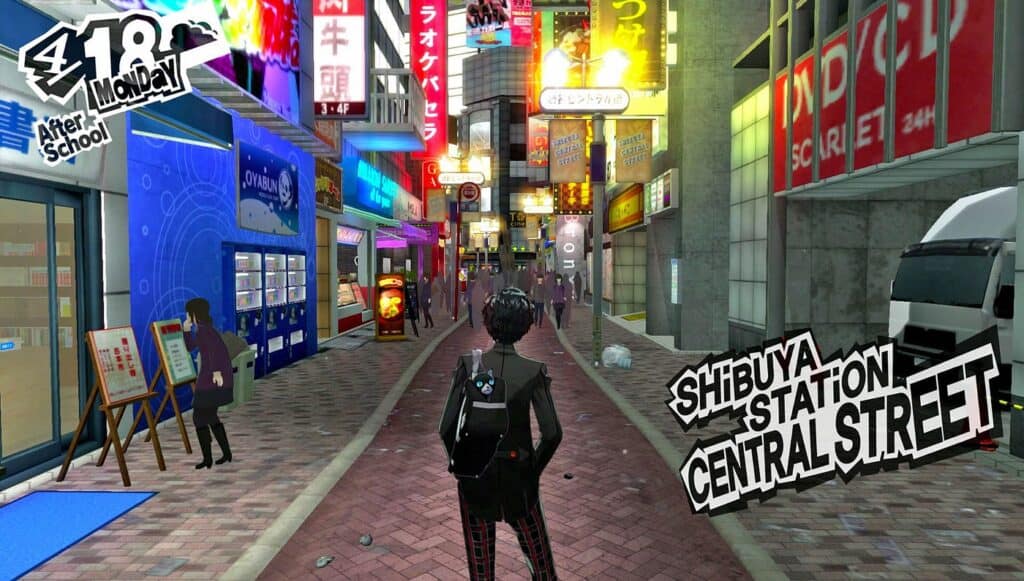
©Persona 5 gameplay screenshot - Original
- Release Date — March 30, 2020
- Platforms — PlayStation 4 (later ported to PC, PS5, Nintendo Switch, Xbox One, and Xbox Series X/S)
- Review Aggregate Score — 95% (Universal Acclaim)
Speaking of JRPGs, Sega and Atlus’ Persona 5 Royal is the definitive version of what is perhaps the greatest modern JRPG. The original Persona 5 already set a high bar in terms of its gameplay, story, visuals, and presentation, and Persona 5 Royal does everything the vanilla Persona 5 did and more. The game’s new chapter and palace each contribute to the core experience in meaningful ways, and Persona 5‘s blending of RPG dungeon-crawling and slice-of-life social systems have never felt or looked as good as they do in Persona 5 Royal.
Two Point Campus
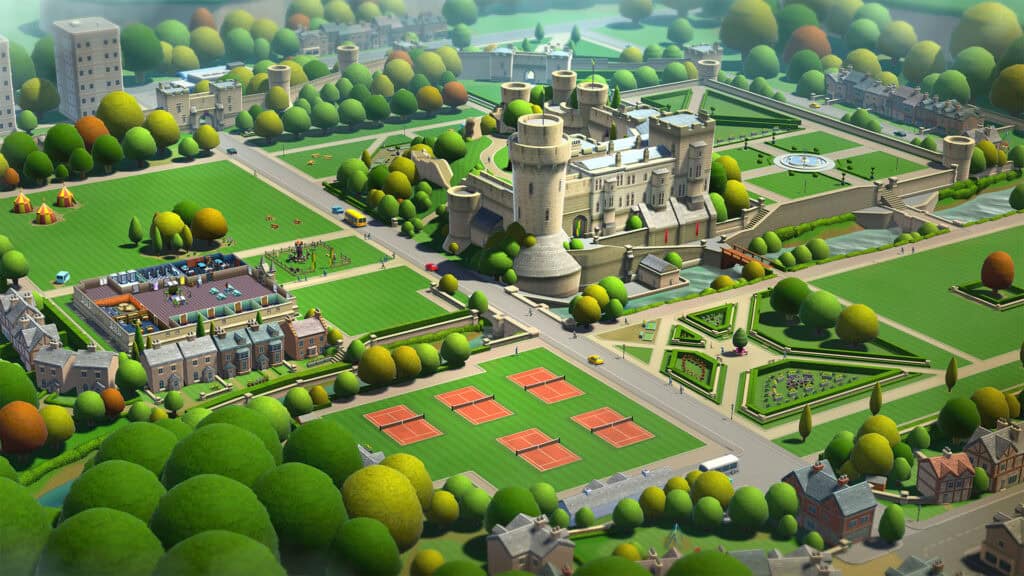
©Two Point Campus gameplay screenshot - Original
- Release Date — August 9, 2022
- Platforms — PC, PlayStation 4, PlayStation 5, Nintendo Switch, Xbox One, Xbox Series X/S
- Review Aggregate Score — 83% (Generally Favorable)
The Two Point games are an addictive and humorous simulation franchise with just the right blend of accessible gameplay and depth, easing players into what could otherwise be a daunting experience and making it a pleasantly relaxing one instead. Like Two Point Hospital before it, Two Point Campus is more of what makes the Two Point games great only now with the new collegiate setting and an even heavier emphasis on humor and silliness. Surprisingly, Two Point Campus is even better on a Steam Deck or Nintendo Switch, where its approachable take on simulation makes it a great game to play in short bursts on the go.
Like a Dragon: Ishin!
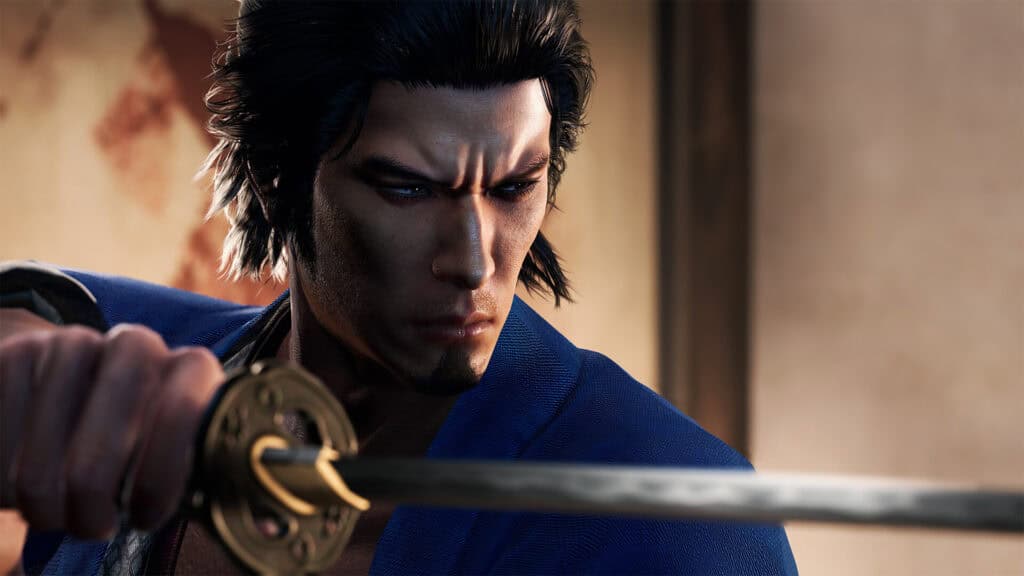
©Like a Dragon: Ishin! gameplay screenshot - Original
- Release Date — February 21, 2023
- Platforms — PC, PlayStation 4, PlayStation 5, Xbox One, Xbox Series X/S
- Review Aggregate Score — 81% (Generally Favorable)
Last year’s Like a Dragon: Ishin! is actually a remake of the Yakuza spin-off of the same name from 2015, making its way to the West for the first time in the process. Though the story Like a Dragon: Ishin! tells is based on very true historical events, the key players are all replaced with familiar actors from the Yakuza franchise, with series hero Kazuma Kiryu playing the samurai revolutionary Ryoto Sakamoto. And, like the mainline Yakuza games, Like a Dragon: Ishin! emphasizes the interpersonal relationships and character development of its main cast.
Sonic Superstars
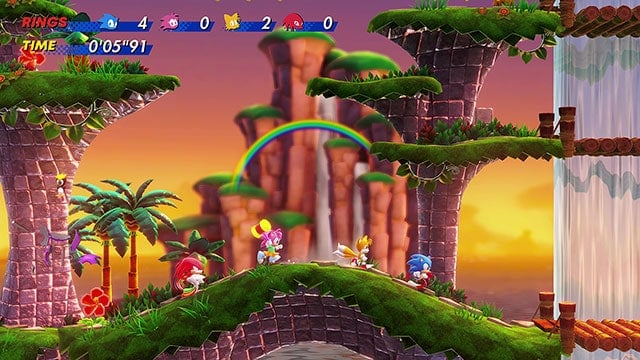
©Sonic Superstars gameplay screenshot - Original
- Release Date — October 17, 2023
- Platforms — PC, PlayStation 4, PlayStation 5, Nintendo Switch, Xbox One, Xbox Series X/S
- Review Aggregate Score — 76% (Generally Favorable)
The latest Sonic game is essentially a perfect mix between the 2D gameplay of the series’ past with the 3D visuals of a more modern Sonic game, striking a careful balance between all eras of Sega’s “Blue Blur”. Though it occasionally misses the mark in terms of meeting the highs of Sonic Mania‘s level design, Sonic Superstars is still the best mainline Sonic game in years and a reminder of how the series is at its best when it sticks to what it knows best.
Like a Dragon: Infinite Wealth
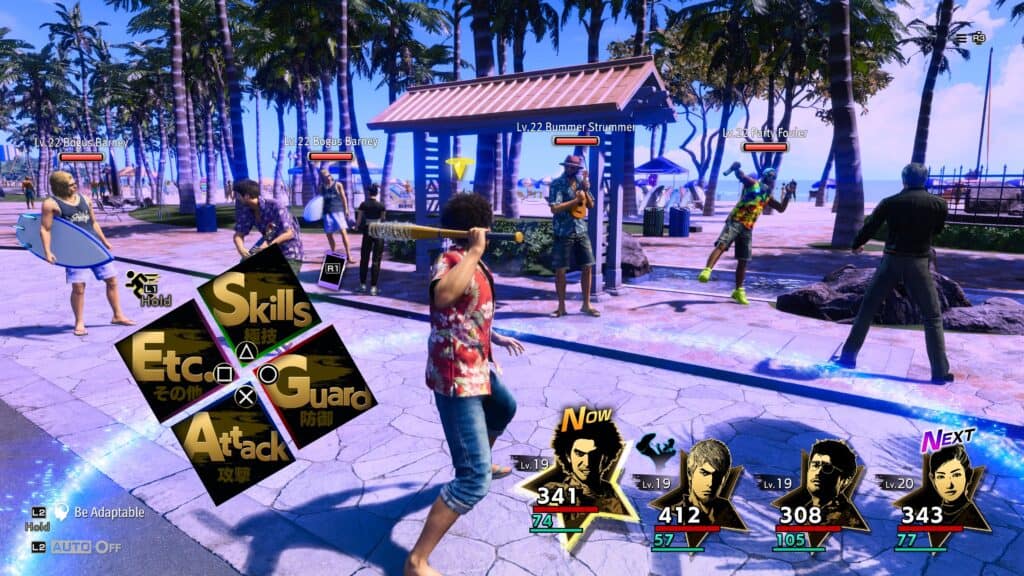
©Like a Dragon: Infinite Wealth gameplay screenshot - Original
- Release Date — January 26, 2024
- Platforms — PC, PlayStation 4, PlayStation 5, Xbox One, Xbox Series X/S
- Review Aggregate Score — 90% (Universal Acclaim)
Aside from some unfortunate microtransactions that block crucial gameplay bonuses (such as New Game +) behind a paywall, Like a Dragon: Infinite Wealth is somehow even better than Yakuza: Like a Dragon and yet another excellent mainline entry in the Yakuza series to utilize turn-based battling and other JRPG mechanics. The real highlight, though, is getting to experience the meeting between the original series hero Kazuma Kiryu and the new protagonist Ichiban Kasuga, with the ensuing “odd couple”/”buddy cop” adventure that plays out becoming one of the best stories in a series with few valleys.
The image featured at the top of this post is ©Sega logo.
